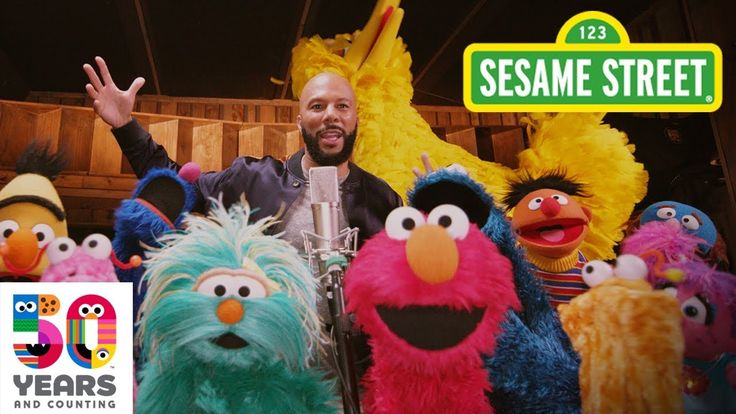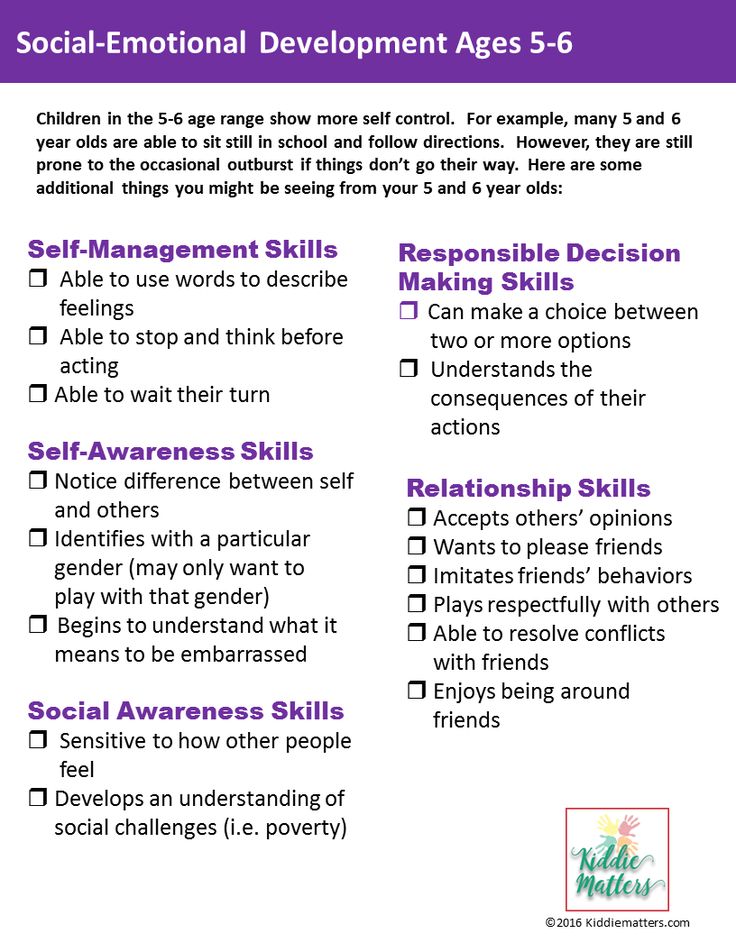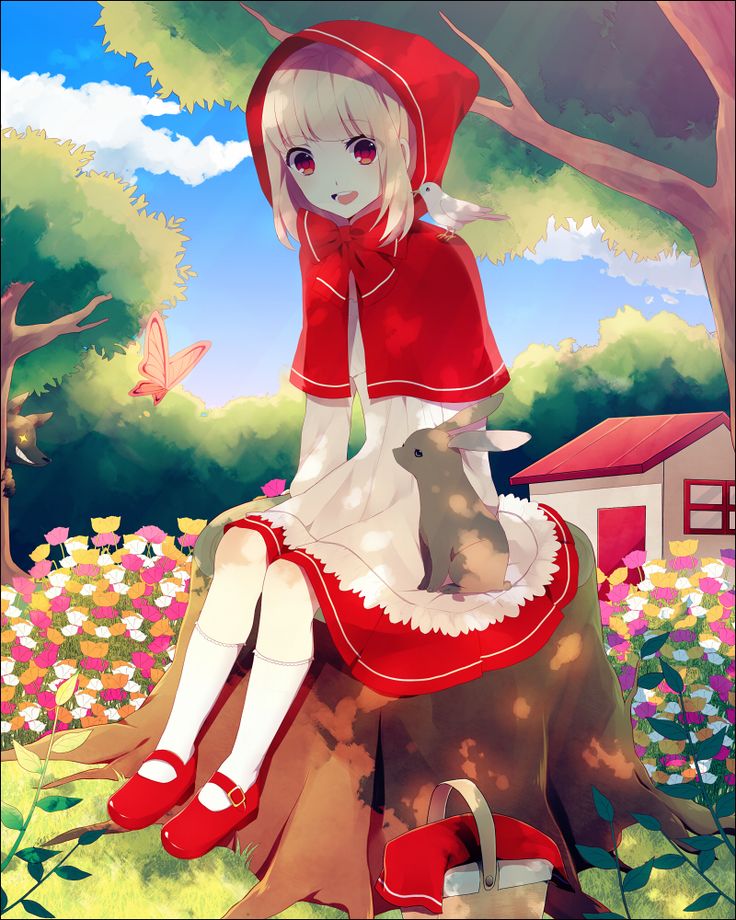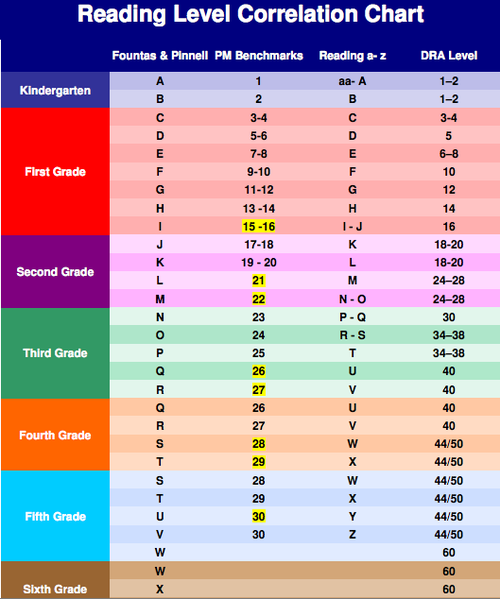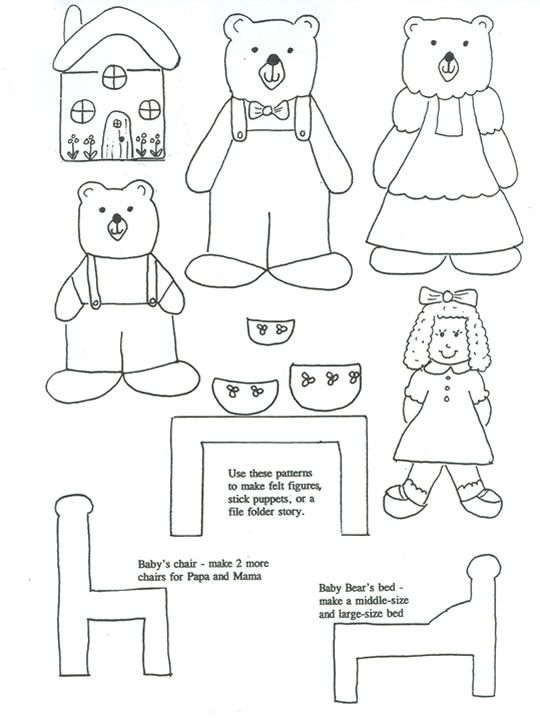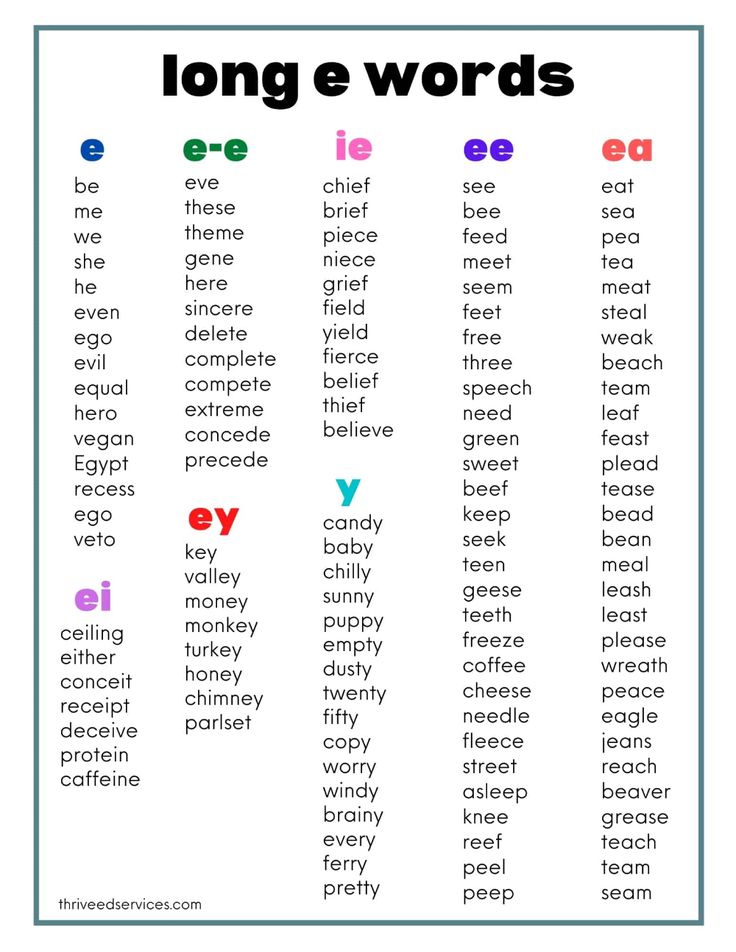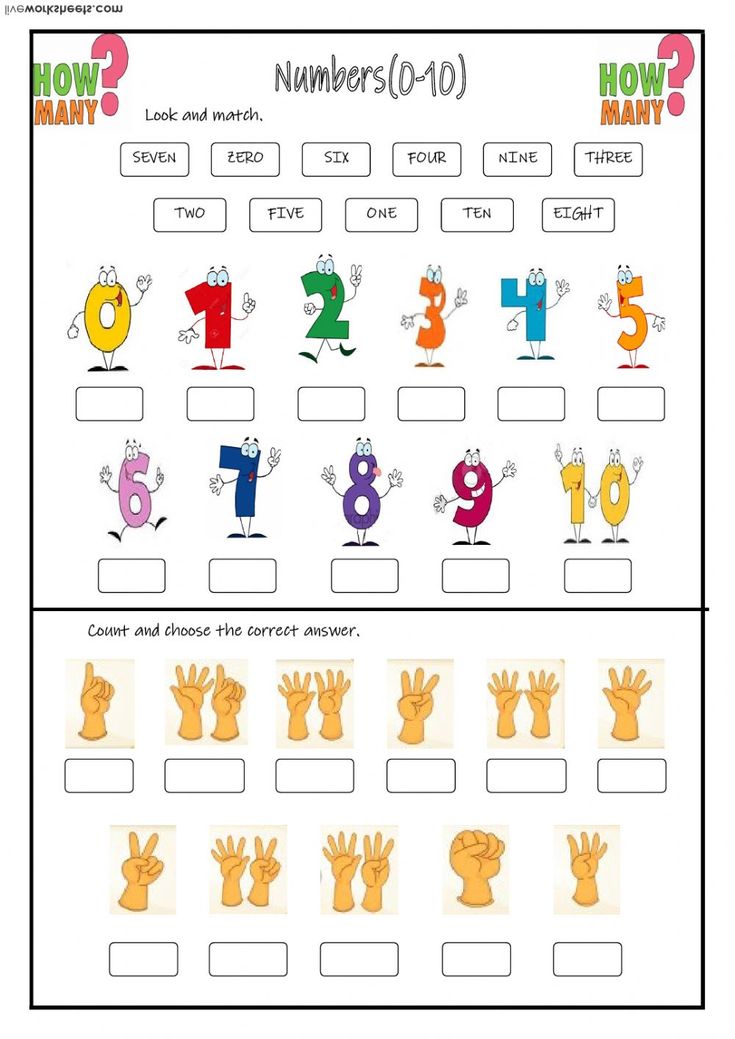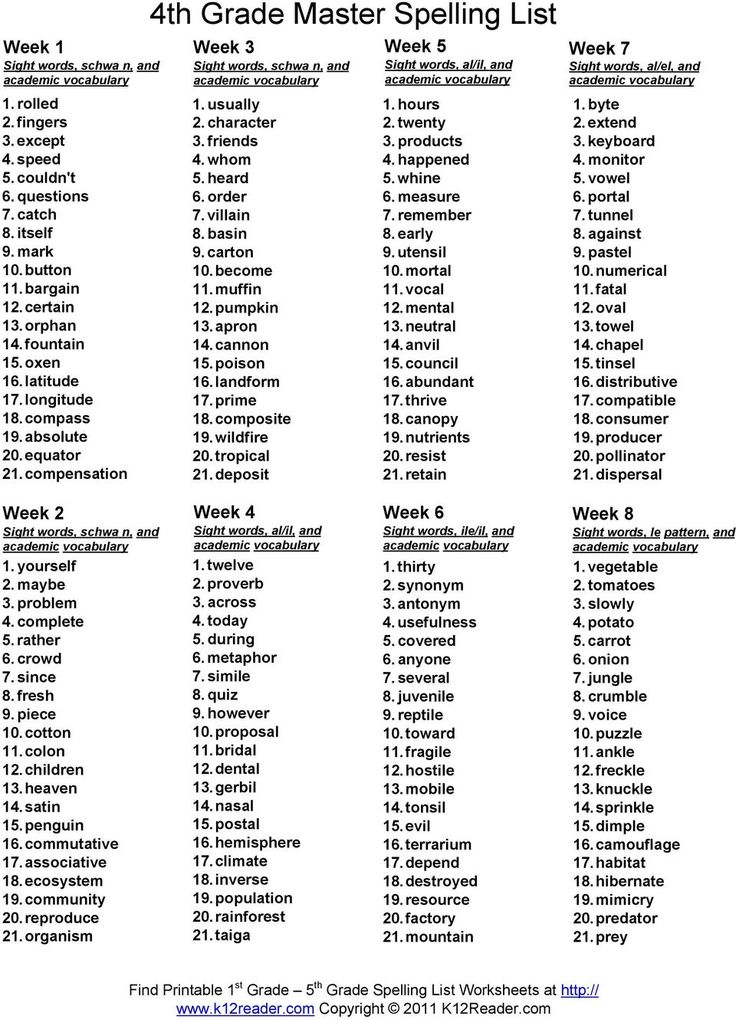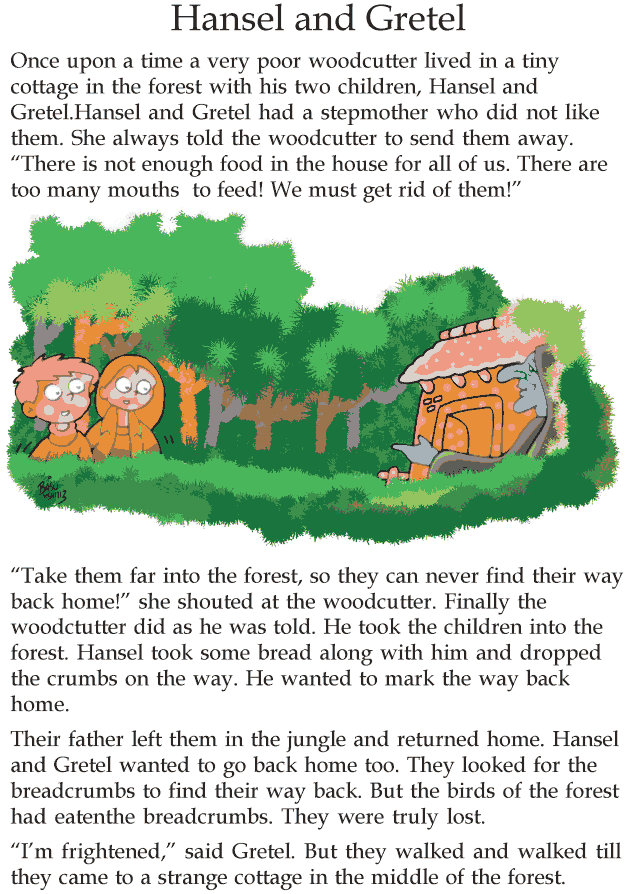What are my vowels
Vowels: Types of Vowels
by Craig Shrives
This Page Includes...
- Video
- Printable & Sendable Test
- Why Vowels Are Important
- Key Points
What Are Vowels? (with Examples)
The letters A, E, I, O, and U are called vowels. The other letters in the alphabet are called consonants.
There is a debate over whether Y is a vowel or a consonant. We will discuss this later.
Formal Definition for Vowel
A vowel is classified as "a speech sound produced by a comparatively open configuration of the vocal tract, with vibration of the vocal cords but without audible friction."Short and Long Vowels
In English, the sounds of the vowels are group into two pairs: short vowels and long vowels.
The short vowels are pronounced as follows:
- "a" as in
"bat"
- "e" as in
"bed"
- "i" as in
"bit"
- "o" as in
"bog"
- "u" as in
"but"
The long vowels are pronounced as follows:
- "a" as in
"haze"
- "e" as in
"he"
- "i" as in
"hi"
- "o" as in
"hope"
- "u" as in
"human"
Unfortunately for those learning English, these vowel sounds can be created with lots of different spellings. It is even common for a single vowel to create the sound of a different vowel (e.g., the "a" in "any" creates a short "e" sound). Here are some examples:
Some alternative spellings for the short "e" vowel:
many
bread
said
leopard
Some alternative spellings for the long "a" vowel:
pain
prey
pray
-
puree
When teaching vowels, it used to be a common practice to show the short vowels as lowercase letters (aeiuo) and the long vowels are uppercase letters (AEIOU).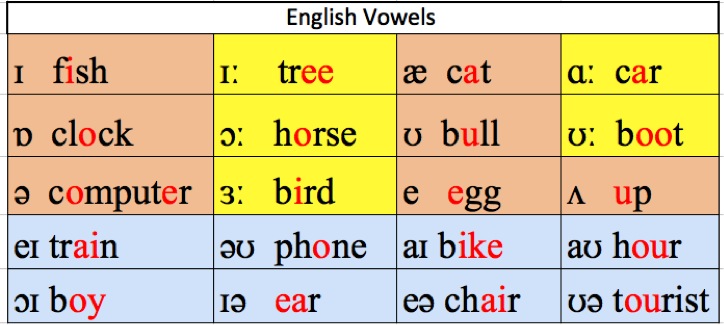 However, as both sets usually appear as lowercase letters in words, this practice has largely been dropped from teaching materials.
However, as both sets usually appear as lowercase letters in words, this practice has largely been dropped from teaching materials.
That's Interesting!
Every Syllable Has a Vowel Sound
A vowel sound (but not necessarily a vowel in the actual spelling) will be present in a syllable.
Interesting Words
Here are some interesting words with regard to their vowels:
- The word "Iouea" (a genus of sea sponges) contains all five vowels and no other letters. (Being the name of a genus (i.e., a proper noun), it is written with a capital letter. Also of note, it is the shortest word with four syllables.)
- The words "abstemious" and "facetious" contain all five vowels in order.
Is Y a Vowel?
Using the formal definition above, the letter Y in words like "hymn" and "shy" is also a vowel. However, in words like "beyond" and "yes," Y is a consonant because the breath is partly obstructed.
However, in words like "beyond" and "yes," Y is a consonant because the breath is partly obstructed.
So, is Y a vowel? Well, sometimes it is, and sometimes it isn't, which is why it is often called a semi-vowel. The argument for classifying Y as a consonant (which most do) is based on this: When Y is a vowel, it is really just an I. When it is a consonant, it is being itself.
Why Vowels Are Important
Here are two good reasons to think more carefully about vowels.
(Reason 1) Be clear on when to use "an" and "a."
Use "an" (not "a") before a vowel sound. The important word here is sound.
Get the Rule Right!
This is the rule:
- Use 'an' before a vowel sound.
This is NOT the rule:
- Use 'an' before a vowel.
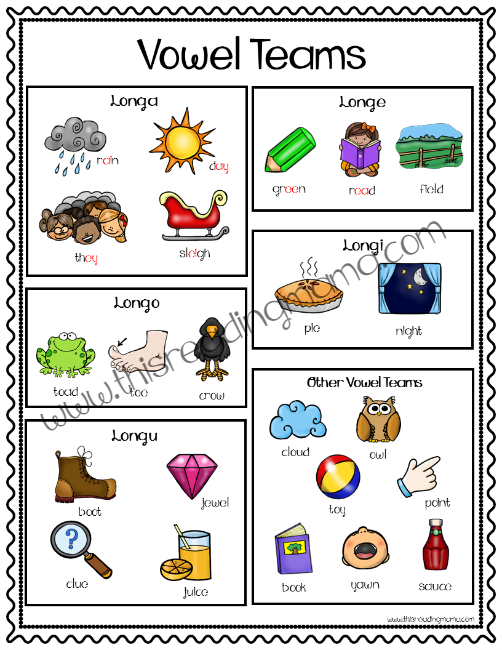
Knowing when to use "a" and "an" is all about the sound of the next letter. (It is not about whether the next letter is a vowel or a consonant.). Look at these examples:
- an apple. a apple. ("An" is correct because "apple" starts with a vowel sound (and a vowel for that matter).)
- an RTA. a RTA ("An" is correct because "RTA" starts with a vowel sound ("ar"), even though the first letter is not a vowel.)
While we're on this subject, it's worth reminding ourselves that the words "an" and "a" are called the indefinite articles.
- An unidentified man with a unicorn tattoo rented a house an hour ago. (Even though they start with the same three letters, "unidentified" and "unicorn" attract different indefinite articles. Similarly, "hour" attracts "an" while "house" attracts "a.
- Becoming a eunuch wasn't a one-off deal it was a two-off deal. ("Eunuch" and "one-off" start with vowels but with consonant sounds.)
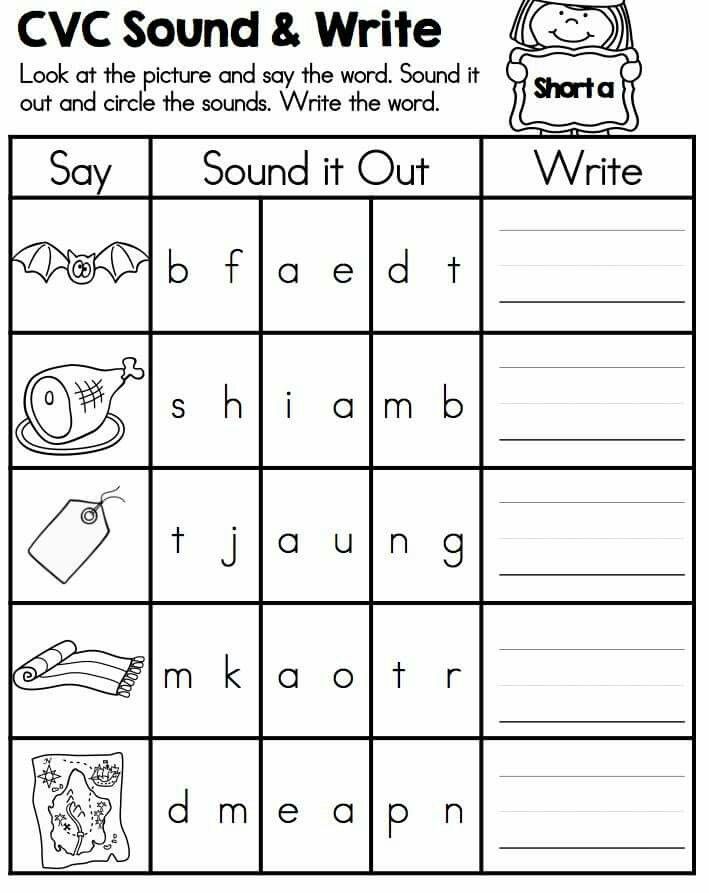 " Remember that it's all about the sound of the first letter.)
" Remember that it's all about the sound of the first letter.)
Read more using "an" and "a."
(Reason 2) Use assonance to add rhythm and musicality to your writing.
Assonance is a literary technique created by repeating the same vowel sound in neighboring words. It is used by lyricists and poets to encourage their readers and listeners to consider the near rhyme created by the assonance. (NB: Assonance contrasts with consonance, which is a similar literary technique in which nearby words repeat the same consonant sound.)
Here are some examples of assonance:
- His fleet feet seem impossible to beat.
- "A host, of golden daffodils" (Extract from "I Wandered Lonely as a Cloud" by poet William Wordsworth)
- "Hear the mellow wedding bells" (Extract from "The Bells" by American writer Edgar Allen Poe)
Read more about assonance.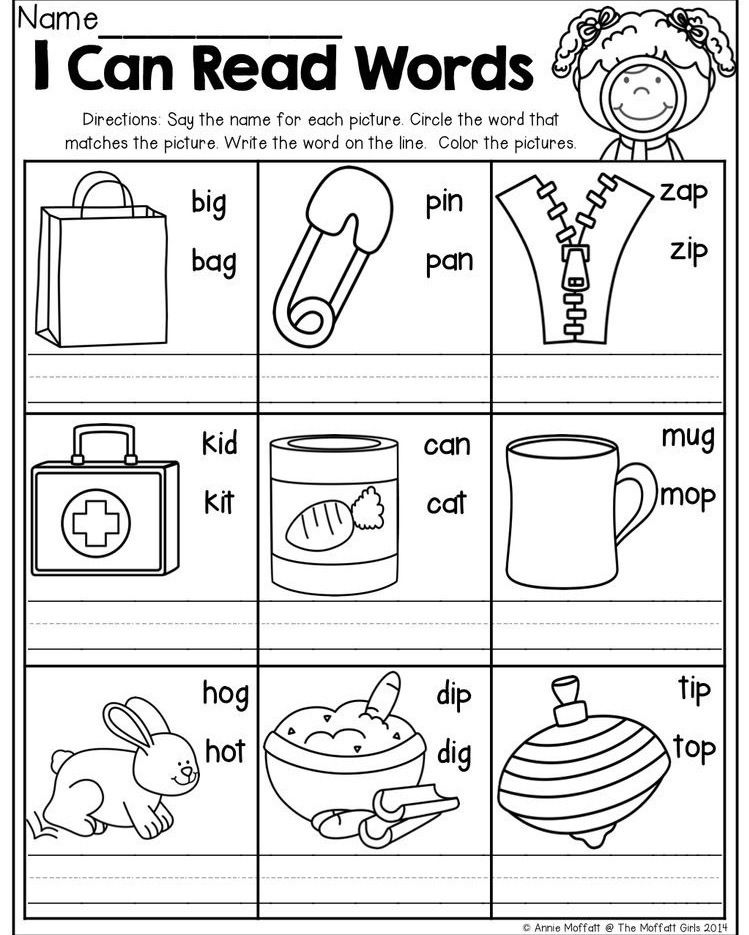 Here, for comparison, is an example of consonance:
Here, for comparison, is an example of consonance:
- I earn my keep by cracking locks or picking pockets.
Key Points
Try our drag-and-drop test on the types of syllable.
Video Lesson
Here is a 12-minute video summarizing this lesson on vowels.
Printable Test
Help Us Improve Grammar Monster
- Do you disagree with something on this page?
- Did you spot a typo?
Find Us Quicker!
- When using a search engine (e.g., Google, Bing), you will find Grammar Monster quicker if you add #gm to your search term.
Next lesson >
See Also
What is a diphthong?The top 10 spelling rulesThe top 20 misspelled wordsHow to improve your English spellingWhat is a schwa vowel?What is assonance?What is consonance?Using "an" or "a" with consonantsDrag-and-drop test on the types of syllableGlossary of grammatical terms
Page URL
Understanding Vowels
The Sound City Reading program teaches the vowels and vowel patterns one at a time so that students can become very familiar with one pattern before going on to the next.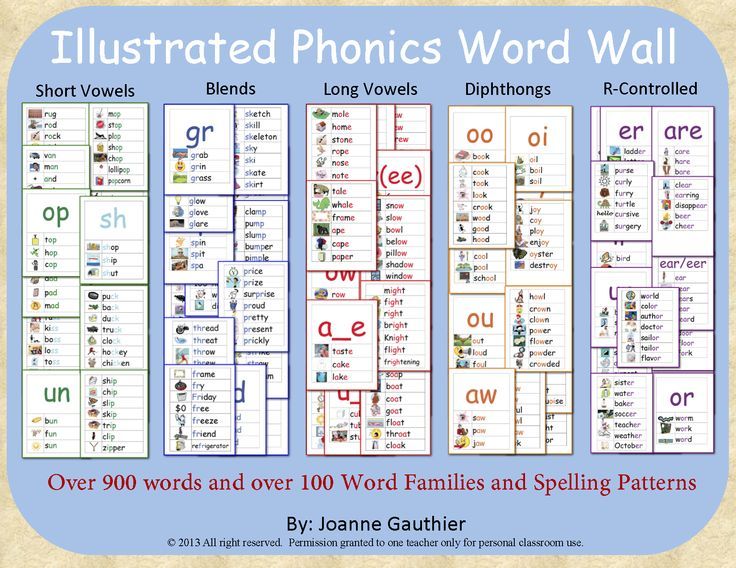 Patterns that are similar are taught one after the other, so that students can see the similarities between them.
Patterns that are similar are taught one after the other, so that students can see the similarities between them.
Students practice saying the vowel sounds they have learned from sound charts and flashcards daily. They also write the patterns they have learned, when given the sounds by the teacher. After learning a new pattern, students spell and read words with the pattern. This step by step process makes learning the vowels much easier.
To hear the vowel sounds from the sound story and sound charts in the student books, click on the audio and video menu headings.
Do not be discouraged by the number of different vowel patterns. They will be taught in an orderly fashion and explained thoroughly as you work through this program. If you are not familiar with them, you will learn them along with the students, one pattern at a time. There is a logic to the system and it will make more sense as you go forward in the program.
General Notes About Vowels
- The vowels in the English language are a, e, i, o, and u.
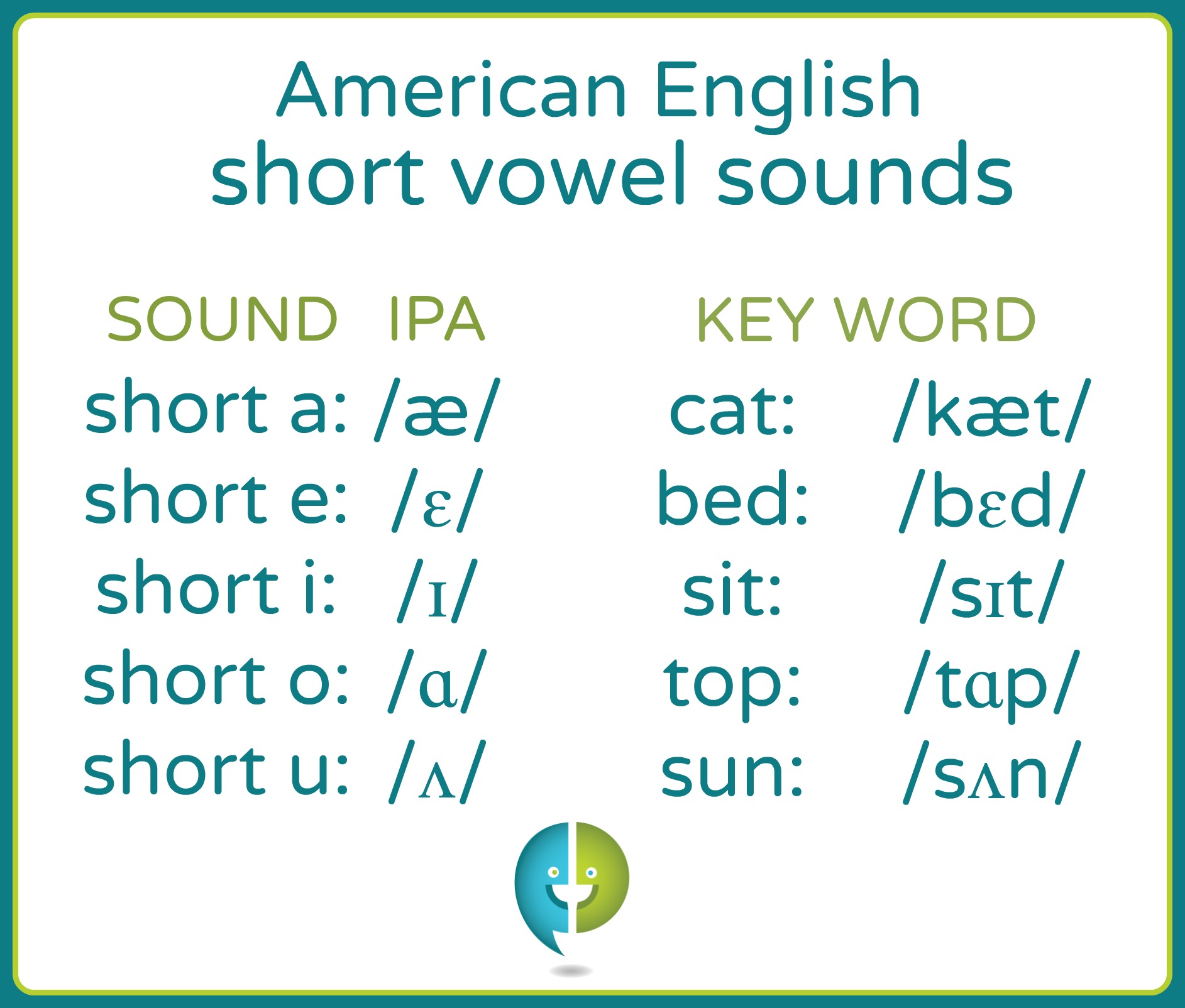 In some words the letter y acts as vowel (my, happy) or as part of a vowel pair (play, key, boy). The letter w can also be used as part of a vowel pair (saw, few, snow).
In some words the letter y acts as vowel (my, happy) or as part of a vowel pair (play, key, boy). The letter w can also be used as part of a vowel pair (saw, few, snow). - Even though there are only five vowel letters, there are many different vowel sounds. You can hear each vowel sound when you pronounce the sound picture or the key word for that pattern. The vowel sounds, along with the consonant sounds, are introduced in A Sound Story About Audrey And Brad. Part one of the story introduces the short vowel sounds and the long i sound. Part two introduces the rest of the vowel sounds. Click on AUDIO in the menu to hear the sound story read aloud.
- English has incorporated many words from other languages. That is why there are so many patterns to learn.
- Vowel sounds are different from consonant sounds. You always pronounce a vowel sound with your mouth open, without stopping the flow of air.
 You adjust the shape of your mouth to create the different vowel sounds.
You adjust the shape of your mouth to create the different vowel sounds. - Many of the vowel sounds can be shown with more than one letter pattern. Example: the aw/saw and au/Paul patterns both represent the same sound.
- In some cases, a vowel pattern can represent more than one sound. Example: eat, head, steak.
- Each single vowel can represent two main sounds, the short sound and the long sound. These terms do not mean that the letters themselves are shorter or longer, and it does not mean that the sounds are shorter or longer. They are just the common terms used to indicate the two different sounds.
- Words with short vowel sounds are taught first in this program. There are many words with short vowel sounds and they are very regular. Many short vowel words have only three letters, making them easy to read. After students have learned to read short vowel words, it will be much easier for them to learn to read words with the other vowel patterns.
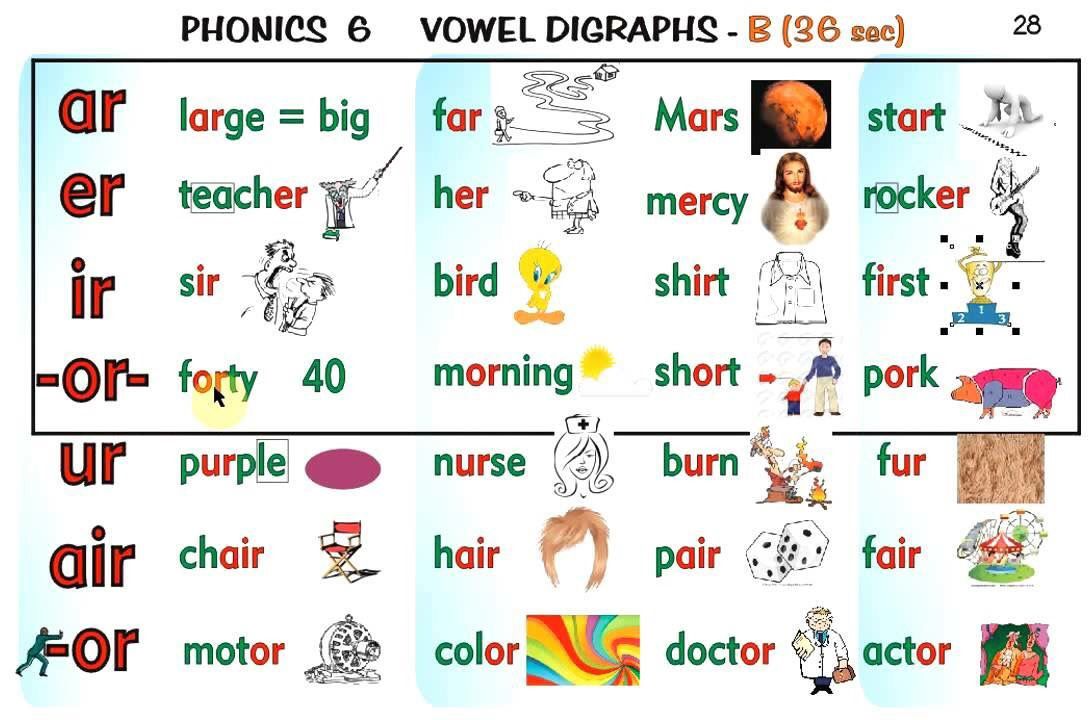
- The long vowel sound is the same as the name of the vowel. When teaching long vowels, a straight line is placed above the vowel to show that it has the long vowel sound: ā, ē, ī, ō, ū.
- Each single vowel can also represent a third sound: ä/all, ë/ballet, ï/pizza, ö/to, and ü/bush. These vowel sounds are less common than the short and long vowel sounds. Two dots are placed above these vowels to show that they do not represent their usual sound.
- Students practice saying the vowel sounds that have been learned from charts as a daily review. On some of the vowel charts, the sounds for the vowels and vowel patterns are shown using sound pictures from A Sound Story About Audrey And Brad. These charts should be used first with the students.
- Some of the vowel charts have key words and pictures. You can hear each vowel or vowel pattern by saying the key words. Being able to pick out the sound from a key word is more difficult. These charts should only be used after students have studied the charts with sound pictures for a period of time.
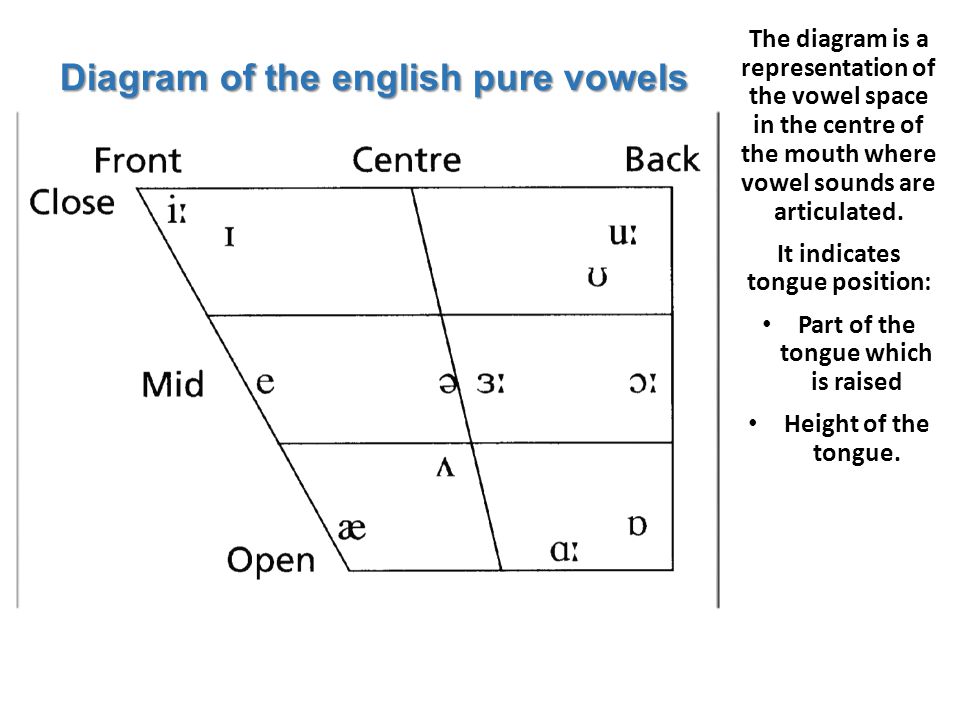
- Vowel patterns are grouped with other similar patterns when they are taught. For example, all of the long vowel patterns are taught one after the other during the same time period. The long vowel patterns are all shown on the same chart. This helps students understand the patterns and remember them more easily.
- The most common vowel patterns are taught first. Less common vowel patterns are taught later.
- To see and hear all of the vowel patterns and sounds in this program, click on VIDEO in the menu. Then click on Advanced Phonics Patterns. You will be able to see videos showing all of the vowel patterns, both beginning and advanced, and hear them pronounced. You will be able to see and hear all of the consonant patterns as well.
In Some Books The Vowels Are Color-Coded
In some of the Sound City Reading books, the vowels are printed in color. There is a specific color for each vowel sound. This helps the vowels and vowel patterns stand out in words, so that students will recognize them and be able to distinguish between consonants and vowels in words.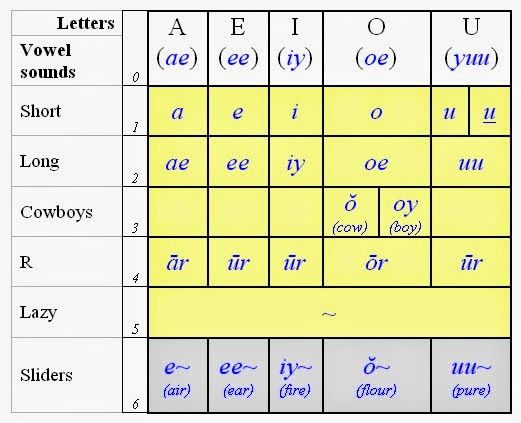 For multi-letter vowels, students will be able to see which letters work together to show the vowel sound. Students will quickly be able to see which patterns sound the same, because the colors will be the same. They will also be able to see when vowel patterns have different sounds, because they will be printed in different colors. There are fifteen different colors used. The colors for the short and long vowel sounds are related. For each vowel, the long sound is shown in a dark color, and the short vowel sound is shown in a lighter version of the same color. Fourteen of these colors represent specific sounds. The fifteenth color is gray. It is used with the r-controlled patterns in which only the /r/ sound is pronounced: dollar, her, bird, tractor, turtle, worm, early, journal. The vowel part of these patterns printed in gray is "silent."
For multi-letter vowels, students will be able to see which letters work together to show the vowel sound. Students will quickly be able to see which patterns sound the same, because the colors will be the same. They will also be able to see when vowel patterns have different sounds, because they will be printed in different colors. There are fifteen different colors used. The colors for the short and long vowel sounds are related. For each vowel, the long sound is shown in a dark color, and the short vowel sound is shown in a lighter version of the same color. Fourteen of these colors represent specific sounds. The fifteenth color is gray. It is used with the r-controlled patterns in which only the /r/ sound is pronounced: dollar, her, bird, tractor, turtle, worm, early, journal. The vowel part of these patterns printed in gray is "silent."
The chart on the left shows the color used for each vowel sound. The chart on the right explains how I chose the colors for the vowel sounds.
Overview - What Vowel Sounds Are Taught In This Program?
Short Vowel Sounds: a/ax, e/egg, i/in, o/ox, u/up - No marks are placed over short vowels in this program. This reduces confusion. Students learn to read words with short vowels first, because they are phonetically regular and there are many short vowel words made up of only three letters.
Long Vowel Sounds: ā/raven, ē/begin, ī/lilac, ō/robot, ū/music - When you say the name of these vowels, you are pronouncing the long vowel sound. When they are introduced, they are shown with a straight line above them. This helps students distinguish long vowels from short vowels. The line is called a macron. The letter y sometimes shows the long ī or the long ē sound, as in the words y/my and y/happy. There are a number of long vowel patterns that are made up of two or more letters, including ai/rain, ee/feet, ie/pie, oa/boat, and ue/cue.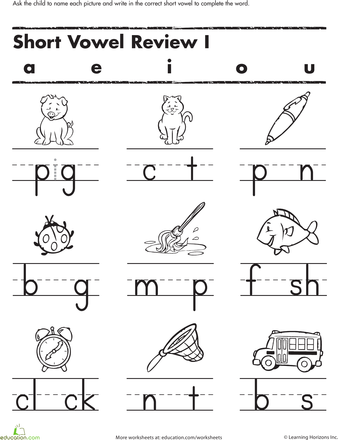 See the charts below.
See the charts below.
Dotted Vowel Sounds: Two dots are placed above these vowels when they are introduced in the teaching materials. The symbol is a German umlaut, which means "not the usual sound." The patterns ä/all, ö/to, ü/bush are neither long nor short sounds. Two more dotted vowels, ë/ballet and ï/pizza, steal the long ā and long ī sounds. There are a number of multi-letter patterns that have dotted vowel sounds, as in äll/ball, ëi/veil, ïe/shield, öu/soup, and oo/book (which shows the ü sound but does not contain the letter u). See the charts below. Note: In books with color-coded vowels, the ö/to sound is printed in the same color as the long ū sound, dark blue, because they are pronounced in almost the same way.
Diphthongs - There are two vowel sounds taught that are diphthongs. You change the position of your mouth as you pronounce these sounds. Each diphthong sound can be represented by two different letter patterns.
- The ou/ouch and ow/cow patterns both represent the same sound.
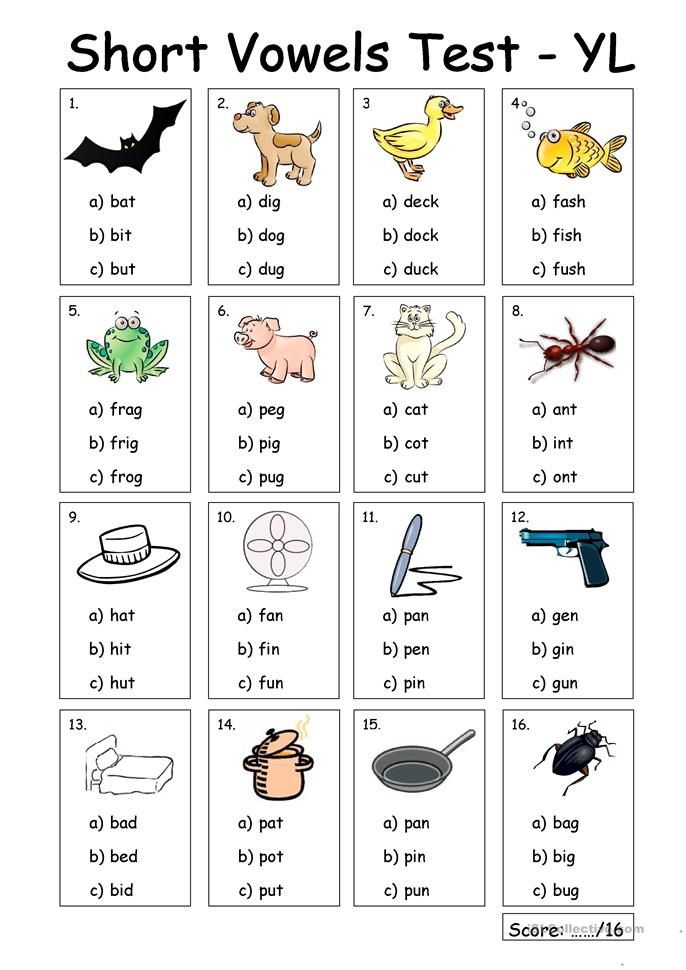
- The oi/coin and oy/boy patterns both represent the same sound.
Odd O Patterns - A number of vowel patterns are taught in this program that begin with the letter o. Several of these patterns are pronounced in unexpected ways. These patterns are grouped together on a single chart. They are called "Odd O" patterns. There is no single rule that applies to all of the patterns, so they just have to be memorized. This category includes the ou/ouch, ou/cow, oi/oil, and oy/boy patterns plus several other patterns.
R-Controlled (Bossy R) Patterns - There are a number of patterns in which one or more vowels are followed by the letter r. This affects the sound of the vowel. The basic R-controlled patterns are ar/car, er/her, ir/bird, or/horse, and ur/turtle. The wor/worm, ear/early, and our/journal patterns are also commonly used. Some the the R-controlled patterns can be pronounced in two or three different ways, as shown on the charts below.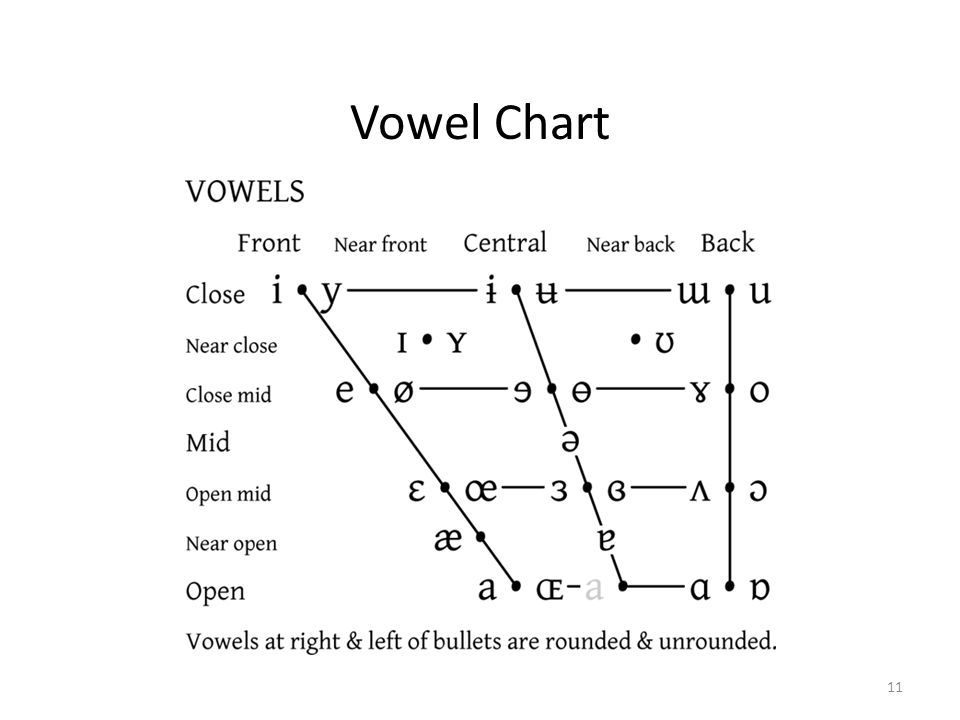
Umbrella Vowels - The umbrella vowels include these patterns: a/what, a_/across, _a/panda, o/son, o_e/love, and ou/country. They are named umbrella vowels because although none of the patterns contains the letter u, each of them represent the short u sound in words, as heard at the beginning of the word umbrella. There is a story to read aloud to the students that explains why these patterns represent the short u sound in words. Essentially, this group contains phonetic patterns that are rule breakers - they don't represent the expected sounds. Grouping them together makes it easier for students to remember them.
Shady Short Vowels - This group of vowels includes ea/head, a/father, and y/gymnastics. This is another group that contains rulebreakers. The patterns do not represent the expected sounds.
The "Vowel Code" - The Sounds For The Single Vowels
These charts show the single vowel sounds, including short vowels, long vowels, and dotted vowels. The chart on the left uses sound pictures to show the sound for each vowel. The chart on the right uses key words to demonstrate the sound for each vowel.
The chart on the left uses sound pictures to show the sound for each vowel. The chart on the right uses key words to demonstrate the sound for each vowel.
Long Vowels - There Are Four Ways To Show Long Vowel Sounds
- Single vowels that come at the end of a syllable show the long vowel sound. This type of syllable is called an open syllable.
- In some cases, two vowels work together to show a single vowel sound. These are called vowel pairs. We can say, "The first vowel does the talking (it says its name) and the second vowel does the walking (it is "silent").
- In some cases, the first and second vowel in a vowel pair pattern are separated by a consonant (we call this a "split vowel" pattern), however the rule remains the same.
- There are three long ī patterns and four long ō patterns that are made up of a long vowel followed by two consonants.
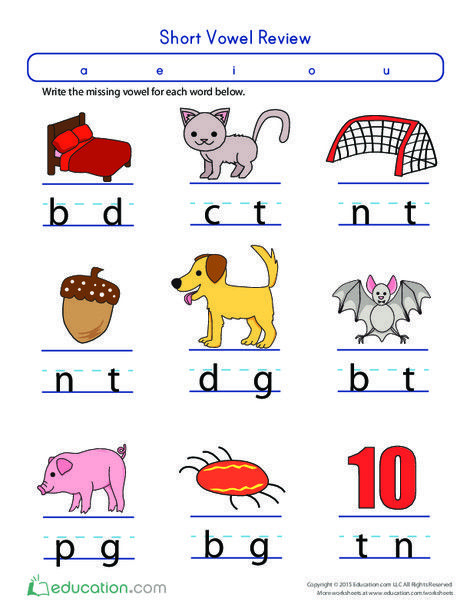 We call these "follow the leader" patterns. The vowel is the leader and shows the long vowel sound. Most of the consonants in these patterns are pronounced as usual. However, if you see an x above a consonant in these patterns, do not pronounce the consonant.
We call these "follow the leader" patterns. The vowel is the leader and shows the long vowel sound. Most of the consonants in these patterns are pronounced as usual. However, if you see an x above a consonant in these patterns, do not pronounce the consonant.
See the additional information below and the related long vowel charts for examples of these four kinds of long vowel patterns.
Closed And Open Syllables - Understanding When To Use Short And Long Vowel Sounds
Syllables are rhythmic units in words. Every syllable must contain a vowel, even if it is not pronounced. Most syllables also contain consonant sounds.
- When you see a word or syllable that has a single vowel followed by one or more consonants, use the short vowel sound. This is called a closed syllable. Examples: up, ill, can, slot, rest, rob-in, rab-bit, fan-tas-tic.
- When you see a word or syllable that has a single vowel at the end of the syllable, use the long vowel sound.
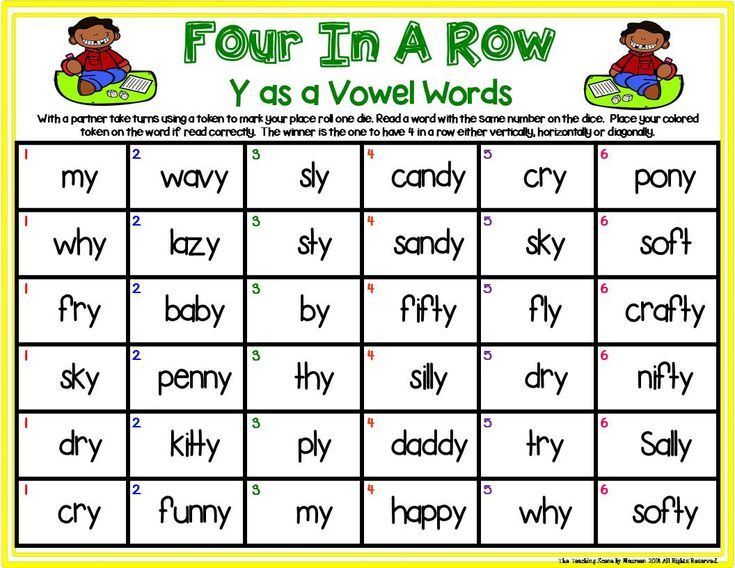 This is called an open syllable. Examples: gō, nō, hē, shē, wē, flū, hī. Examples with the first syllable open: rā-ven, bē-gin, lī-lac, rō-bot, mū-sic. Examples with the second syllable open: hip-pō, ban-jō, men-ū, kud-zū. Examples with both syllables open: sī-lō, hē-rō, tō-fu.
This is called an open syllable. Examples: gō, nō, hē, shē, wē, flū, hī. Examples with the first syllable open: rā-ven, bē-gin, lī-lac, rō-bot, mū-sic. Examples with the second syllable open: hip-pō, ban-jō, men-ū, kud-zū. Examples with both syllables open: sī-lō, hē-rō, tō-fu.
Accented And Unaccented Syllables - When To Use The Schwa Sound
In many words, one syllable is pronounced more forcefully than the other syllables. This type of syllable is called an accented syllable. In accented syllables, the vowel sound is usually pronounced as you would expect. Examples: pi-lot, cab-in, com-pare, re-port.
In some words, one of the syllables is not pronounced as forcefully as the other syllables. This type of syllable is called an unaccented syllable.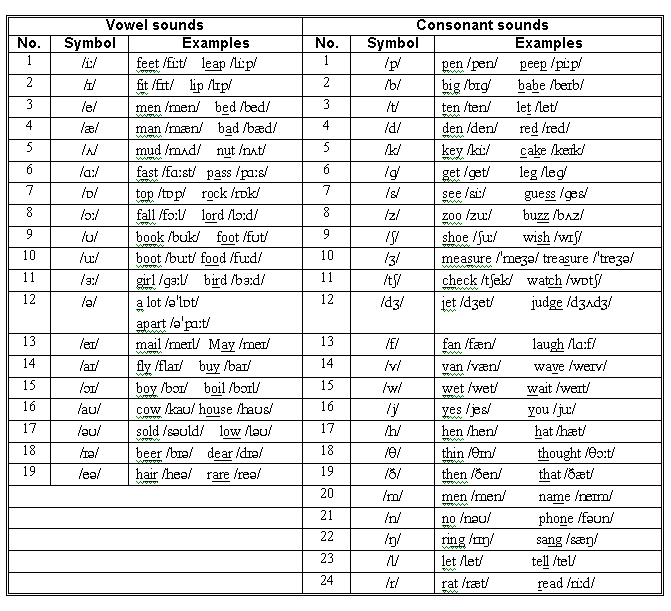 In unaccented syllables, the vowel is hardly pronounced at all. When you read an unaccented syllable, you go from the consonant before the vowel to the consonant after the vowel, sliding past the vowel without pronouncing it. In practice, the skipped vowel sound like a very slight "uh" or "i" sound. This is called the schwa sound. Examples: pi-lot, cab-in, com-pare, en-ve-lope. In this program, a curved arrow is placed under a vowel if it has the schwa sound. It points from one consonant to the next, skipping the vowel.
In unaccented syllables, the vowel is hardly pronounced at all. When you read an unaccented syllable, you go from the consonant before the vowel to the consonant after the vowel, sliding past the vowel without pronouncing it. In practice, the skipped vowel sound like a very slight "uh" or "i" sound. This is called the schwa sound. Examples: pi-lot, cab-in, com-pare, en-ve-lope. In this program, a curved arrow is placed under a vowel if it has the schwa sound. It points from one consonant to the next, skipping the vowel.
Silent E Syllables
Some multi-syllable words end with a "silent e" syllable, as in ap-ple, bot-tle, and sim-ple. All syllables must have at least one vowel, so the letter e must be included at the end of the second syllable in these words. However, the letter e is not pronounced. Only the consonant sounds are pronounced in a silent e syllable.
Only the consonant sounds are pronounced in a silent e syllable.
Long Vowel Patterns
Vowel Pairs - As described above, two vowels can work together to show the long vowel sound for the first letter: rāin, fēet, rōad, frūit, tīe. Pronounce the long sound for the first vowel. Do not pronounce the second vowel. We say, "When two vowels are together, the first one does the talking, and the second one does the walking."
Split Vowel Pairs - In split vowel patterns, two vowels work together to show one long vowel sound, but they are separated by a consonant: mīle, sāfe, thēse, hōme, ūse. This is called a "split vowel" pattern. Pronounce the long sound for the first vowel, Do not pronounce the second vowel. The second vowel is always the letter e. Even though the vowels are separated, we can still say, "When two vowels go walking, the first one does the talking.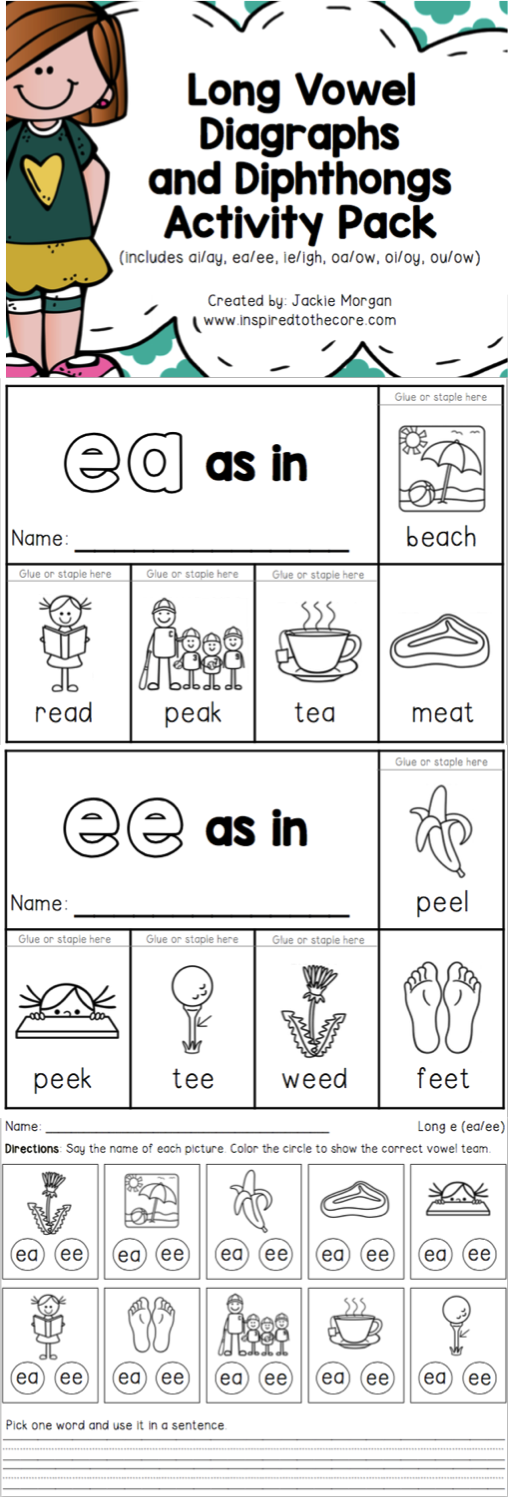 " When teaching these patterns, show students how to draw a bracket below the pattern, starting at the first vowel and ending at the second vowel, to draw attention to the fact that the vowels work together.
" When teaching these patterns, show students how to draw a bracket below the pattern, starting at the first vowel and ending at the second vowel, to draw attention to the fact that the vowels work together.
Vowel-Consonant-Consonant Patterns - Sometimes a vowel that is followed by two consonants represents the long vowel sound. We call this a "follow the leader" pattern. The vowel gets to say its name because it goes first. Examples: fīnd, chīld, nīght, gōld, bōlt, trōll, yōlk. (These patterns must be memorized, because in most words a single vowel followed by one or more consonants represents its short vowel sound: last, went, wisp, soft, jump.)
This chart shows the vowel pair patterns, the split vowel pair patterns, and the vowel-consonant-consonant patterns. All of these patterns are used to show long vowel sounds in words.
| Note: The ew and eu vowel patterns have a broken ruler above them on the long vowel chart to show that they are "rulebreaker" patterns. |
Dotted Vowel Patterns
These are all of the dotted vowel patterns. Remember that the two dots above the vowel indicate that the vowel does not have its usual sound. The sound pictures at the top of the pages show the sound for each dotted vowel. The column on the far right shows some of the odd o patterns, which are not dotted vowels.
Notes: In the alk/walk pattern the letter l is not pronounced. In the ought/bought and the eigh/sleigh patterns the letters gh are not pronounced. In the word ballet the letter t is not pronounced. In the word should the letter l is not pronounced.
Odd O Patterns
The charts below show all of the odd o patterns.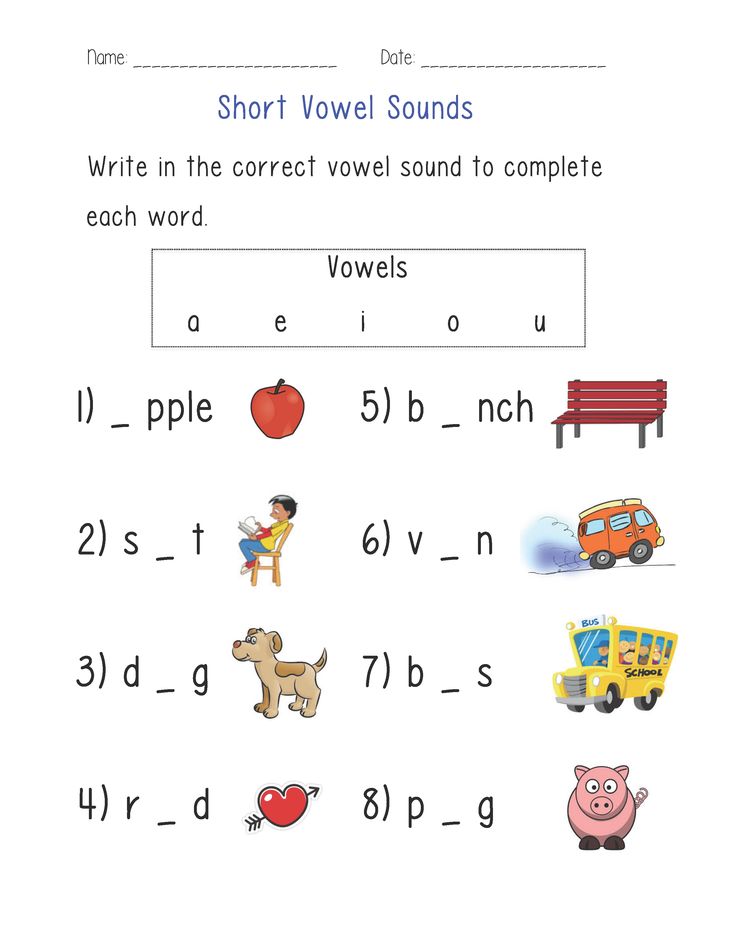 The chart on the left has sound pictures to show the sound for each pattern. The chart on the right has key words to demonstrate the sound for each pattern. In this program these patterns are called "Odd O" patterns, because most of them don't represent the sound that you would expect. The sounds for the Odd O patterns must be memorized.
The chart on the left has sound pictures to show the sound for each pattern. The chart on the right has key words to demonstrate the sound for each pattern. In this program these patterns are called "Odd O" patterns, because most of them don't represent the sound that you would expect. The sounds for the Odd O patterns must be memorized.
These patterns include the two diphthong sounds: oi/coin and oy/boy, and ou/ouch and ow/cow. The oi and oy patterns have exactly the same sound. Likewise, the ou and ow patterns have the same sound. When you pronounce a diphthong, you change the position of your mouth as you say the sound.
R-Controlled Or "Bossy R" Patterns
The "Bossy R" patterns are shown on the charts below. Vowels followed by the letter r make up a special category. The letter r affects the pronunciation of the vowel that comes before it.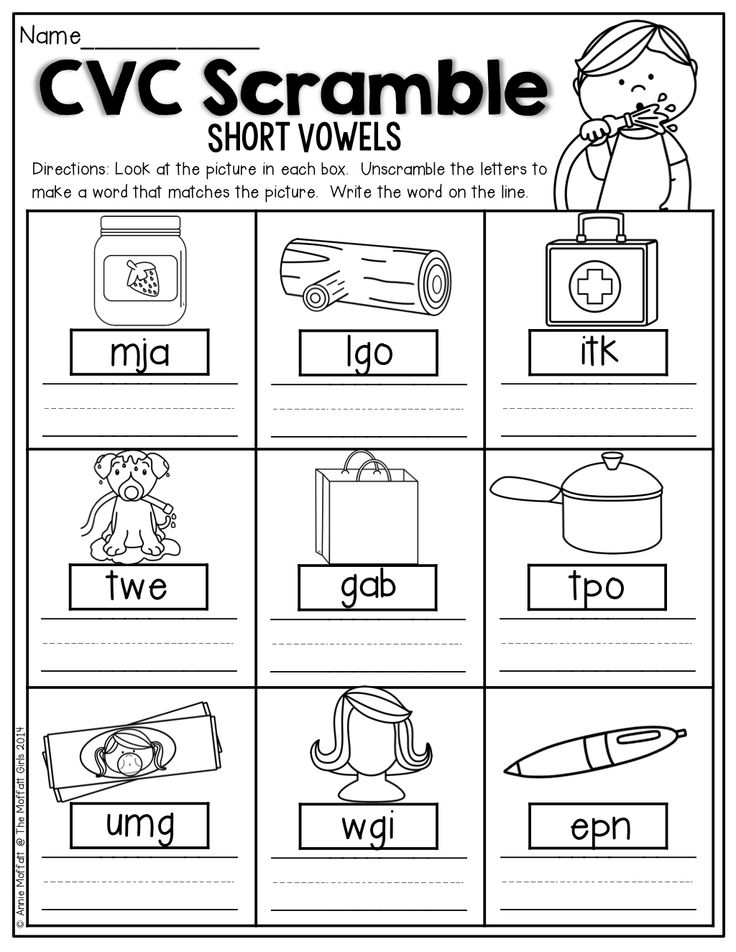 In the ar/car pattern, the letter a has the short o sound, so these patterns are printed with the short o color, light orange. In the or/horse pattern, the vowel o has the long ō sound, so these patterns are printed with the long ō color, dark orange. In some words, the R-controlled vowel is not pronounced at all, as in er/her, ir/bird, and ur/turtle. If the vowel is not pronounced the patterns are printed with the color gray. See the chart below.
In the ar/car pattern, the letter a has the short o sound, so these patterns are printed with the short o color, light orange. In the or/horse pattern, the vowel o has the long ō sound, so these patterns are printed with the long ō color, dark orange. In some words, the R-controlled vowel is not pronounced at all, as in er/her, ir/bird, and ur/turtle. If the vowel is not pronounced the patterns are printed with the color gray. See the chart below.
The chart on the left uses sound pictures to show the sound for each pattern. The chart on the right uses key words to demonstrate the sound for each pattern.
Umbrella Vowels
These patterns are called umbrella vowels. They are rule-breaker patterns because they don't show the expected sounds. But they are taught as a group to make it easier to learn them. In the three top patterns, the vowel a represents the short u sound.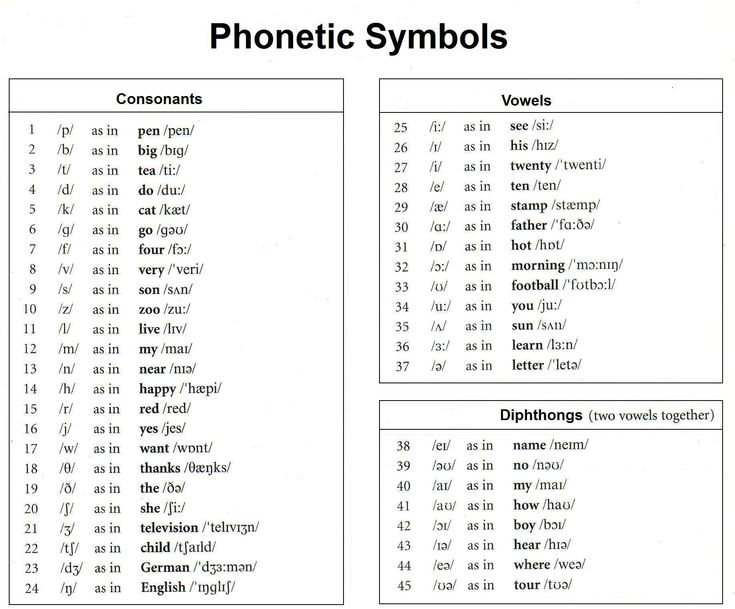 In the three bottom patterns, the vowel o represents to short u sound. The umbrella story explains these vowels in a way that will help students understand them.
In the three bottom patterns, the vowel o represents to short u sound. The umbrella story explains these vowels in a way that will help students understand them.
- a/was - was, what, a
- a_/across - across, away, around, alone
- _a/panda - panda, villa, extra, umbrella
- o/son - son, won, from, front, money, wonder
- o_e/love - love, some, come, none, love, dove
- ou/country - country, southern, double, trouble, young
Shady Short Vowels
There are three short vowel patterns that do not follow the rules.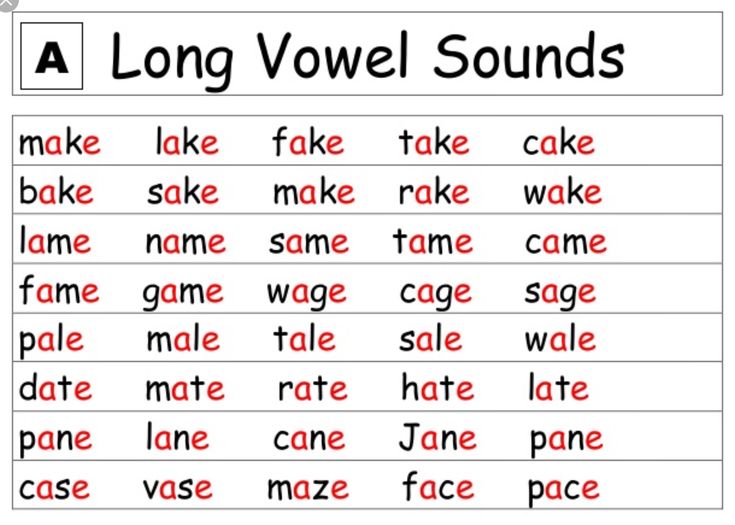 In this program we call them "shady" short vowels. The word "shady" tells us that these vowels are trying to trick us. The chart for these patterns is shown below.
In this program we call them "shady" short vowels. The word "shady" tells us that these vowels are trying to trick us. The chart for these patterns is shown below.
Like the umbrella vowels, these are also rule breakers that are grouped together to help students remember them. The chart on the left uses sound pictures to show the sound for each pattern. The chart on the right uses key words to demonstrate the sound for each pattern.
- The ea/head pattern has the short e sound instead of the long e sound in some words. It is printed in the same light green color as short e.
- In the a/father pattern the a is pronounced like a short o sound. It is printed in the same light orange color as short o.
- In the y/gymnastics pattern the y is pronounced like short i. It is printed in the same light violet color as short i.
Sounds For Y
The letter y is sometimes used as a consonant and sometimes used as a vowel.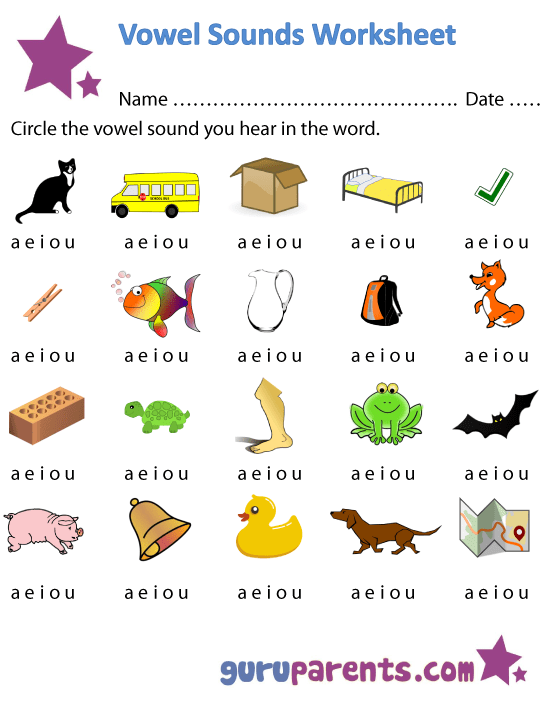
- y/yo-yo - Y is used as a consonant in these words: yo-yo, yes, year, you, yellow.
- y/happy - Y is used as a vowel when it is at the end of the last syllable in a multisyllable word. It represents the long ē sound: hap-py, fun-ny, po-ny, fam-i-ly.
- y/my - Y is used as a vowel when it is the only vowel in a one-syllable word and it appears at the end of the word. It represents the long ī sound: my, by, try, sky, fly. It sometimes represent the long ī sound at the end of a first syllable: py-thon, cy-cle, ny-lon.
- The ye and y_e patterns represent the long ī sound in words: lye, dye, rye, type, style, rhyme.
- y/gymnastics - Y sometimes represents the short i sound in words: gym, myth, symbol, bicycle, gymnastics. This pattern is shown on the "Shady Short Vowels" chart.
Ending Patterns With Silent E
In several ending patterns, the letter e is not pronounced at all.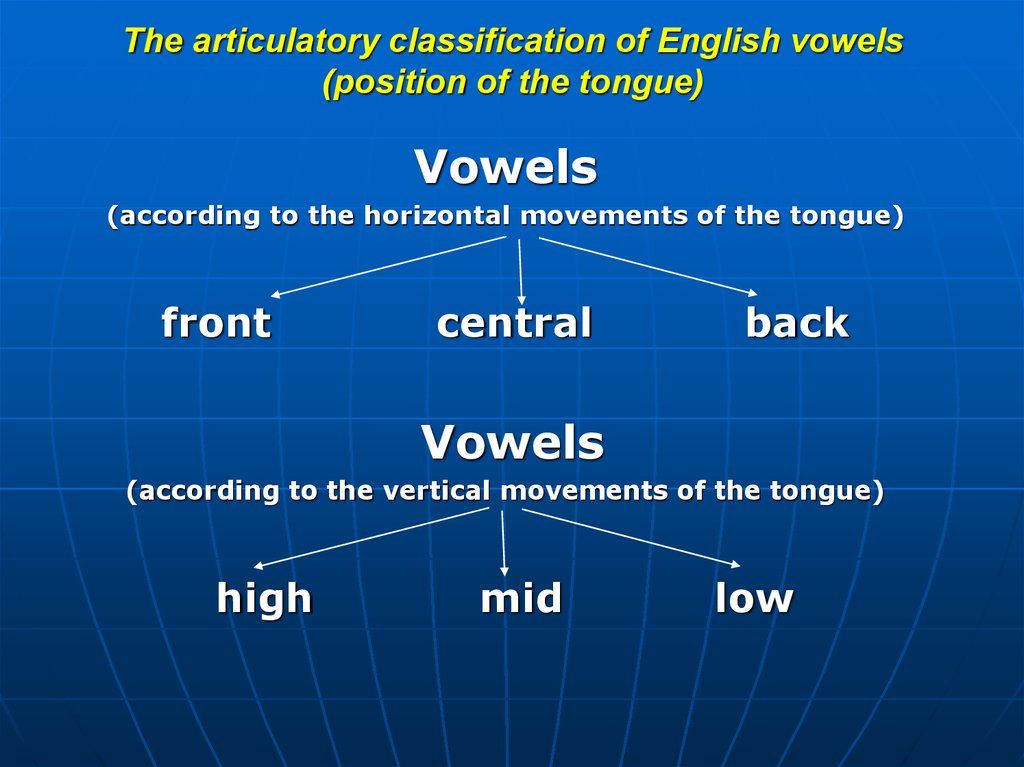 We can say it is a "silent e." When teaching these patterns, place a small x above the e to remind students that it is not pronounced.
We can say it is a "silent e." When teaching these patterns, place a small x above the e to remind students that it is not pronounced.
|
Phonetic analysis of the word. What it is? How to do it? Examples
What is phonetic analysis
Phonetic , or sound-alphabetic, word analysis is an analysis of the sounds and letters that make up this word.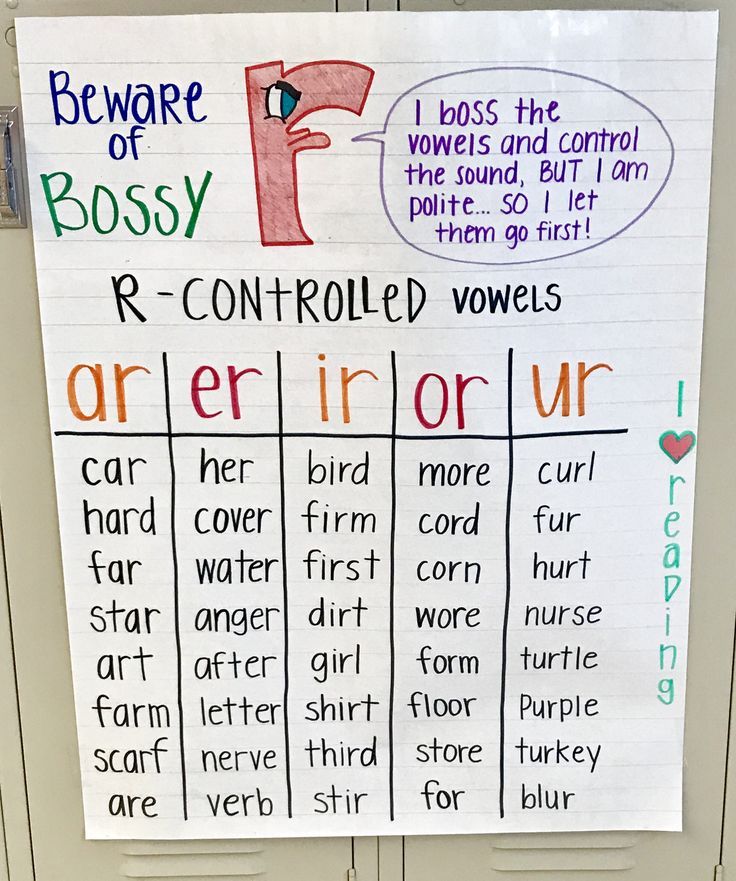
There are 33 letters in Russian, from which we compose words and write them down on paper. When we pronounce a word, we hear sounds - this is how the letters in its composition sound. In some words, the same letter can mean two sounds at the same time or not sound at all. This is where sound-letter analysis comes in handy: it is needed so that we can analyze sounds and letters, write correctly, and also pronounce words.
Demo lesson in Russian
Take the test at the introductory lesson and find out what topics separate you from the "five" in Russian.
How is the phonetic parsing of a word done?
Full transcription of the word.
Vowel sounds: stressed or unstressed, which letter is indicated.
Consonants: voiced, sonorous or voiceless, paired or unpaired; hard or soft, paired or unpaired; which letter is indicated.
The total number of letters and sounds.
You can disassemble words by sounds and letters orally or in writing. These methods are slightly different from each other, so let's consider each one separately. We write down the word and all the sounds that are included in it.
Syllables and stress. We count and write down the number of syllables in a word, we denote the one on which the stress falls.
Sounds. From the next line in a column, we rewrite all the letters in the order in which they appear in the word. Opposite each of them we record the sound and enclose it in square brackets.
Vowel sounds. Next to each vowel we write whether it is stressed or unstressed.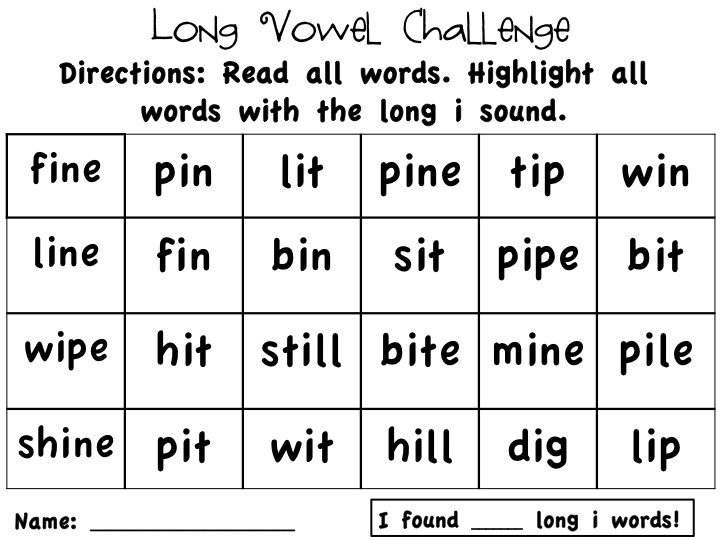 And then we indicate what letter it is designated.
And then we indicate what letter it is designated.
Consonants. Next to each consonant, indicate whether it is voiced or voiceless. Further - paired or unpaired in deafness-sonority. After that, we write, hard or soft sound, and then - paired or unpaired in terms of softness-hardness. At the end, you need to indicate which letter denotes the sound.
Number of letters, sounds. We count and write down the number of letters and sounds in a word.
Now let's use this algorithm with examples.
Example No. 1. Written phonetic analysis of the verb search
Search [abysk'ivat'] - 4 syllables, 2nd stressed.
o - [a] - ch., unstressed.
b - [b] - acc., sound. couple, tv par.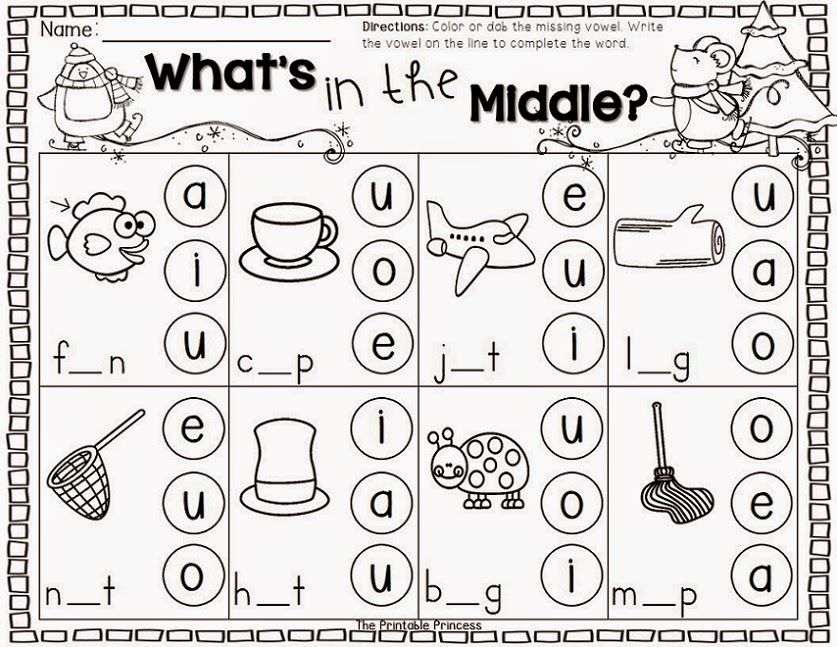
s - [s] - ch., shock.
s - [s] - acc., deaf. couple, tv par.
k - [k'] - acc., deaf. steam, soft par.
and - [and] - Ch., unstressed.
c - [c] - acc., sound. couple, tv par.
a - [a] - Ch., unstressed.
t - [t'] - acc., deaf. steam, soft par.
b — [–]
10 points, 9 stars
Example No. 2. Written phonetic analysis of the adjective spring
Spring [v'is'en':y'] - 3 syllables, 2nd stressed.
in - [in '] - acc., sound. steam, soft par.
e - [i] - gl., unstressed.
s - [s'] - acc., deaf. steam, soft par.
e - [e] - ch., percussion.
n - [n':] - acc., sonorn. unpaired, soft par.
and - [and] - Ch. , unstressed.
, unstressed.
th - [th'] - acc., sonorn. unpaired, soft unpaired
8 points, 7 stars
Example No. 3. Written phonetic analysis of a noun professor
Professor [praf'es:ar] - 3 syllables, 2nd stressed.
p - [n] - acc., deaf. couple, tv par.
r - [r] - acc., sonorn. unpaired, tv. par.
o - [a] - ch., unstressed.
f - [f'] - acc., deaf. steam, soft par.
e - [e] - ch., percussion.
s - [s:] - acc., deaf. couple, tv par.
o - [a] - ch., unstressed.
r - [r] - acc., sonorn. unpaired, tv. par.
9 points, 8 stars
Free English lessons with a native speaker
Practice 15 minutes a day. Learn English grammar and vocabulary. Make language a part of life.
Sample oral phonetic analysis
If you need to do sound-letter analysis orally, follow this algorithm:
-
Syllables and stress.
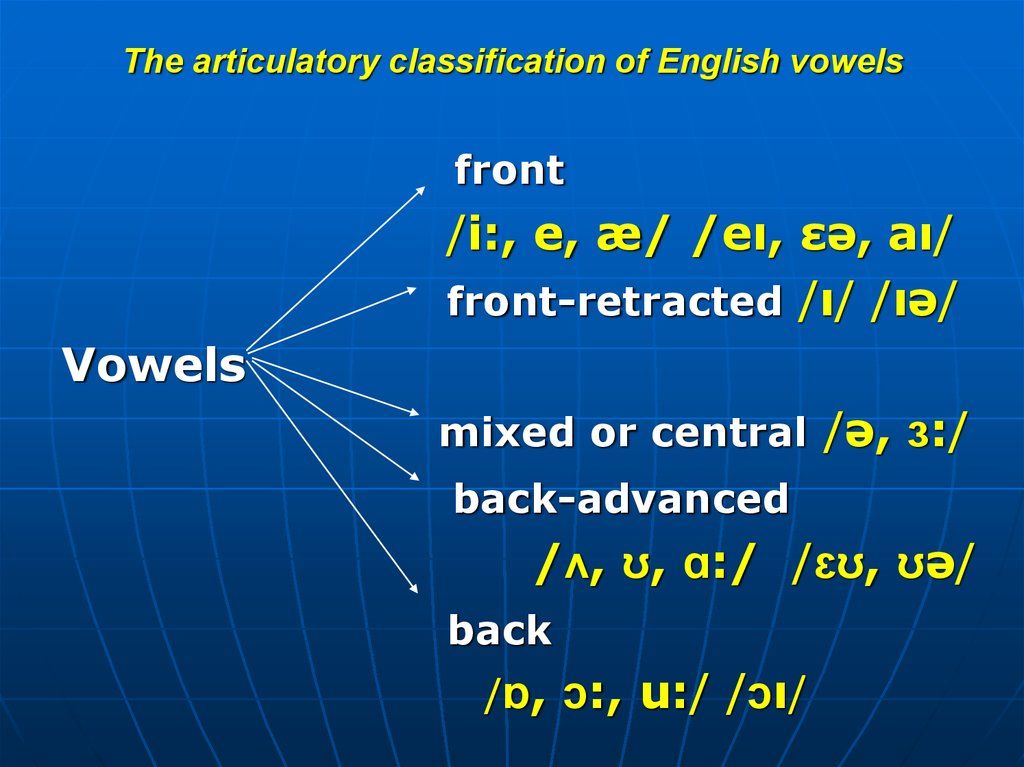 Count and name the number of syllables in a word, indicate the one that is stressed.
Count and name the number of syllables in a word, indicate the one that is stressed. -
Vowel sounds. Name the vowels in the order in which they sound in the word. For each of them, determine whether it is percussion or unstressed. Then specify the letters with which they are indicated.
-
Consonants. For each of the consonants, determine whether it is voiced or voiceless, and then - paired or unpaired according to deafness-voicedness. After that, establish whether the sound is hard or soft, as well as paired or unpaired in terms of softness-hardness. At the end of the analysis of each of the consonants, specify which letter it is designated in the word.
-
Number of letters, sounds. Count and name the number of letters and sounds in a word.
Let's practice oral phonetic analysis on the example of the same words that we have analyzed above.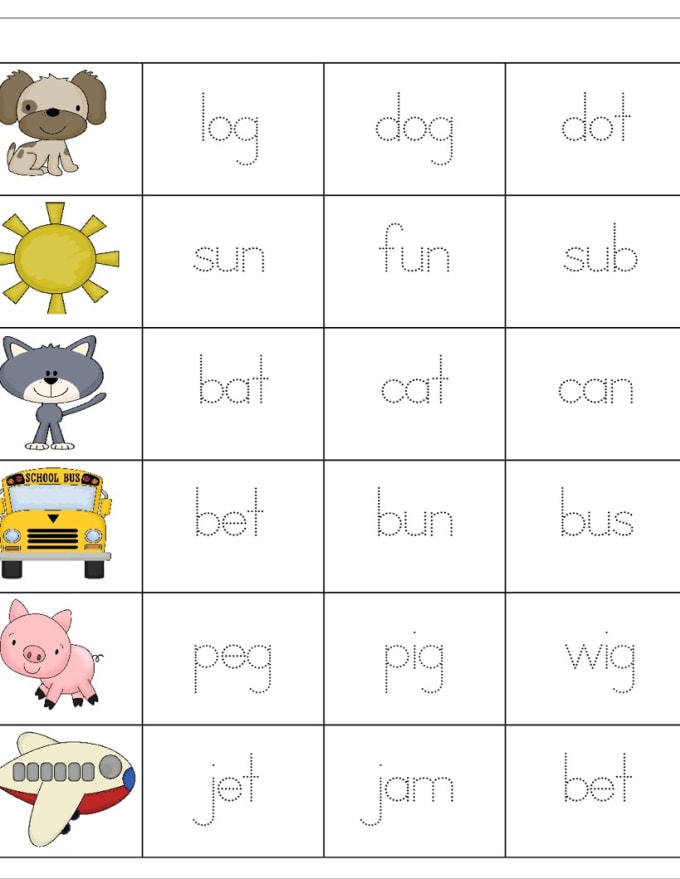
Example No. 1. Oral phonetic analysis of the verb search
2. Vowels:
first - unstressed [a], marked with the letter about ;
second - shock [s], designated by the letter s ;
third - unstressed [and], marked with the letter and ;
fourth - unstressed [a], designated by the letter a .
3. Consonants:
[b] - voiced double, solid double, marked with the letter b ;
[s] - deaf double, solid double, marked with the letter from ;
[k'] - deaf double, soft double, marked with the letter to ;
[c] - voiced double, hard double, marked with the letter in ;
[t'] - deaf double, soft double, marked with the letter t ;
letter ь does not represent sound.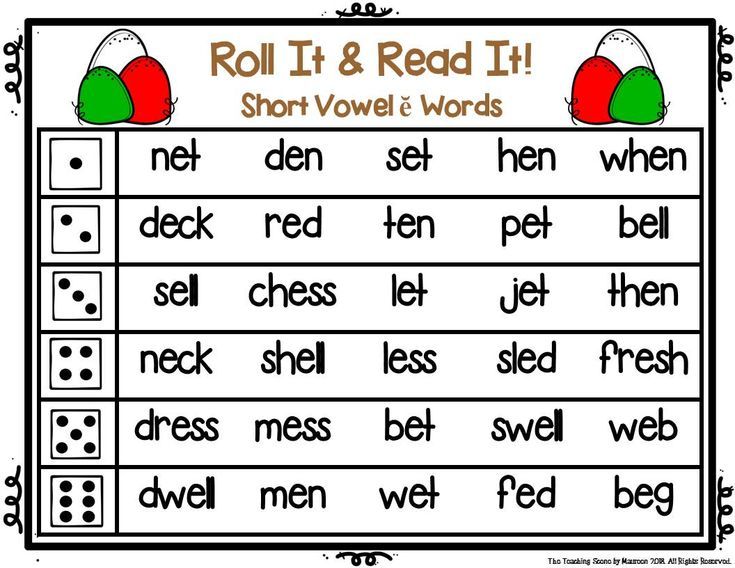
4. In the word search 10 letters and 9 sounds.
Example No. 2. Oral phonetic analysis of the adjective spring
2. Vowels:
the first is unstressed [i], marked with the letter e ;
second - shock [e], marked with the letter e ;
third - unstressed [and], marked with the letter and .
3. Consonants:
[v'] - voiced double, soft double, marked with the letter in ;
[s'] - deaf double, soft double, marked with the letter from ;
[n'] - voiced unpaired (sonor), soft paired, marked with the letter n . The second n does not form a sound in a word;
[d'] - voiced unpaired (sonor), solid unpaired, marked with the letter and .
4. The word spring has 8 letters and 7 sounds.
Example No. 3. Oral phonetic analysis of the noun professor
2. Vowels:
first - unstressed [a], marked with the letter about ;
second - shock [e], marked with the letter e ;
the third is unstressed [a], designated by the letter o .
3. Consonants:
[p] - deaf double, hard double, marked with the letter p ;
[p] - voiced unpaired (sonor), solid paired, marked with the letter p ;
[f'] - deaf double, soft double, marked with the letter f ;
[s] - deaf double, solid double, marked with the letter with . The second from does not form a sound in a word;
[p] - voiced unpaired (sonor), solid paired, marked with the letter p .
4. The word professor has 9 letters and 8 sounds.
Test yourself
Let's find out how well you understand what phonetic parsing is. Below you will find three tasks with which you can practice this skill.
Task 1
Disassemble the following words according to their sound composition: busy, guest, vacancy, pronounce, speaking.
Task 2
Perform oral phonetic analysis of words: box, hospital, go, union, marine.
Task 3
Read the short text below and make a written phonetic analysis of all the nouns in it.
We wandered in the forest in spring and observed the life of hollow birds: woodpeckers, owls. Suddenly, in the direction where we had previously planned an interesting tree, we heard the sound of a saw. It was, we were told, cutting firewood from deadwood for a glass factory.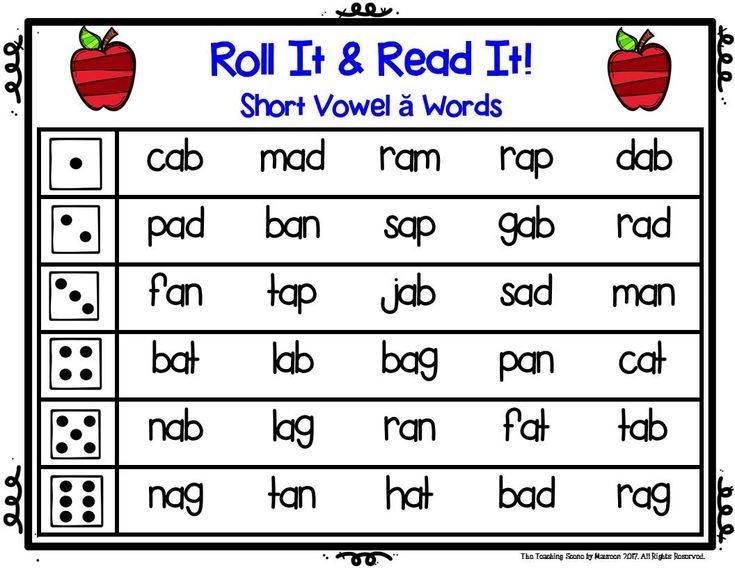
For the first time, students start doing phonetic analysis of words in the 3rd grade of elementary school. Over time, tasks in the lessons become more complicated, so it is important to understand the topic in time. If after reading this article you still have questions, we invite you to the Skysmart online Russian language school for knowledge. In the classroom, the teacher will tell you what a phonetic (sound-letter) analysis of a word is and how to do it correctly in order to increase the grade at school.
Learning vowels tasks for preschoolers 5-6 years old in a playful way
Learning to read begins with the study of letters and sounds. The kid learns them separately, and then begins to put them into syllables, and later into words. So that acquaintance with letters does not turn out to be too difficult for the baby, you need to organize it correctly. Let's find out how to quickly learn vowel sounds with your child.
How to start learning vowels
Many parents begin to teach their children the ABC, looking at all the letters in a row, in alphabetical order.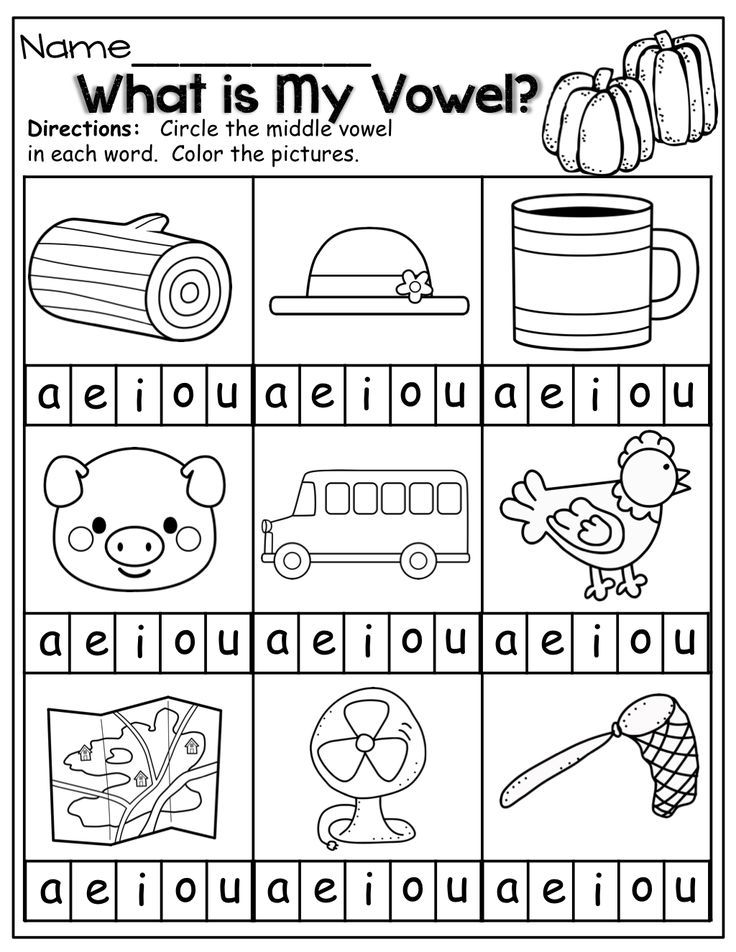 This is not the correct method. It is better to divide the letters into vowels and consonants and learn each group separately. This approach will greatly facilitate the child's task.
This is not the correct method. It is better to divide the letters into vowels and consonants and learn each group separately. This approach will greatly facilitate the child's task.
Start with vowels. First, explain to your child the difference between vowels and consonants. Vowels are sounds that are pronounced by the voice. They are sonorous, from which you can sing, stretch your voice.
To show your child the difference between vowels and consonants, give him a mirror and ask him to pronounce different sounds. Let him see how the position of the mouth changes during the pronunciation of vowels and consonants. When pronouncing vowels, the mouth is freely open, the tongue lies and does not move, and the air freely leaves the throat. The pronunciation of consonants involves lips, tongue, teeth.
When the child learns to distinguish between these two groups of sounds, you can move on to a more detailed study of vowels.
Method for studying vowels
There are ten vowels in the Russian alphabet - A, O, U, Y, I, Y, E, Y, Y, E.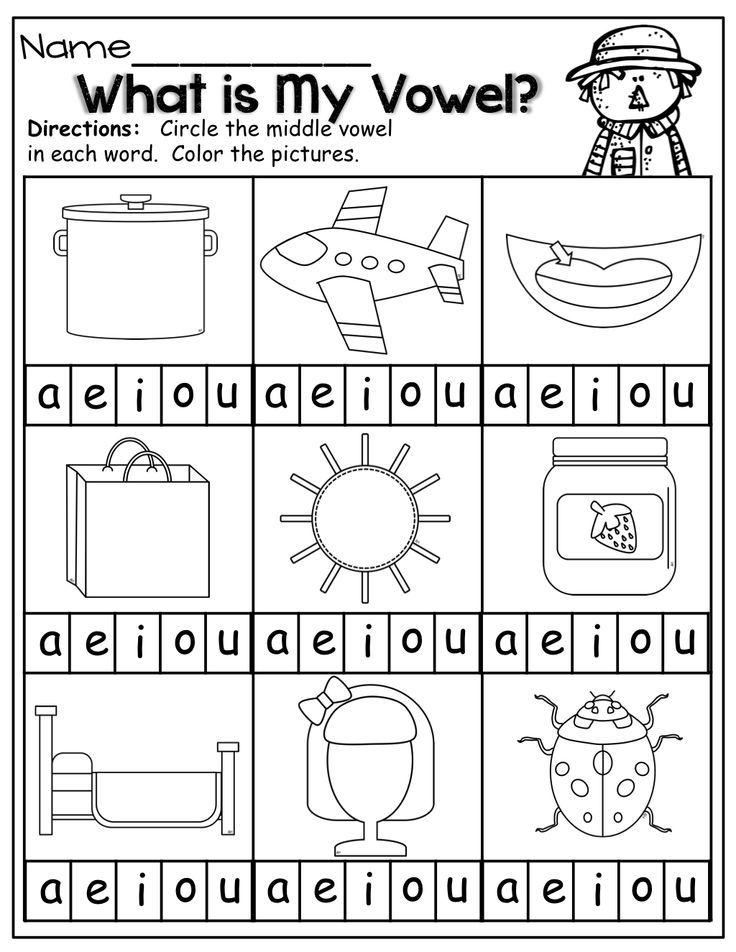 To make it easier for a child to remember them, make them from cardboard (or buy ) cards with their image.
To make it easier for a child to remember them, make them from cardboard (or buy ) cards with their image.
Letters A, O, U, Y, E write in one color, for example, red. And the letters I, Yo, Yu, I, E - in a different color, for example, blue. This is necessary so that the child learns to distinguish between "hard" and "soft" vowels.
Arrange the cards in pairs: A-Z, O-Yo, Y-Y, Y-I, E-E and show the child. Explain that paired sounds are similar to each other, only A, O, U, S, E are pronounced firmly and with a wide open mouth, and I, E, Yu, I, E have a soft sound and when they are pronounced, the lips stretch or fold into tubule.
Let the child practice making sounds in pairs by observing his facial expressions in the mirror.
Letter games
Children learn best through play. So turn the boring memorization of sounds into a fun game.
- Shuffle the cards and place them face up on the table. The task of the kid is to fold the cards with red and blue letters (A-Z, O-Yo, etc.
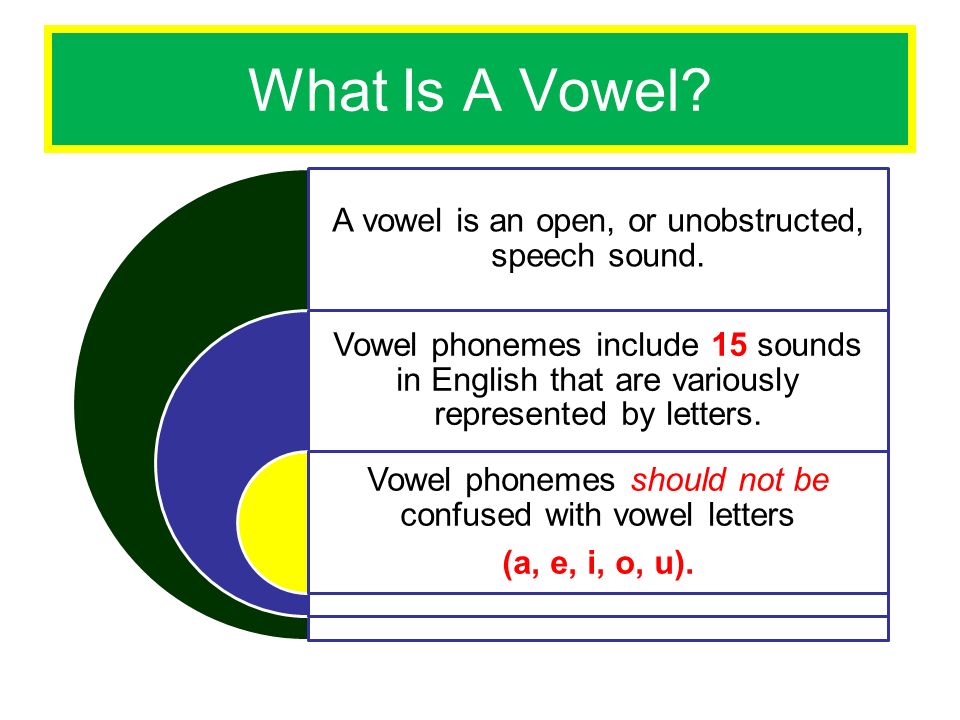 ) in pairs.
) in pairs. - Shuffle the cards like playing cards. Pull out one, show the child and ask what the letter is written on it. If he answered correctly, the card goes to him, if incorrectly, it is returned to you. To make it easier for the baby, first show the letters in pairs (A, then Z, etc.), and then at random.
- Draw or give a task child to draw a house with ten windows - five in two rows. Write in each box of the first row the letters A, O, U, Y, E, and then ask the child to write in the boxes of the second row a pair for each letter. Then erase the letters and enter in the first row of boxes I, Yo, Yu, I, E and ask the baby to enter their pair in the second row. Then erase all the letters again and invite the child to enter all the pairs in both rows of boxes.
- name words beginning with vowels, and ask your child to name this sound (watermelon, donkey, snail, spinning top, apple, Christmas tree, blackberry, needle, exam).
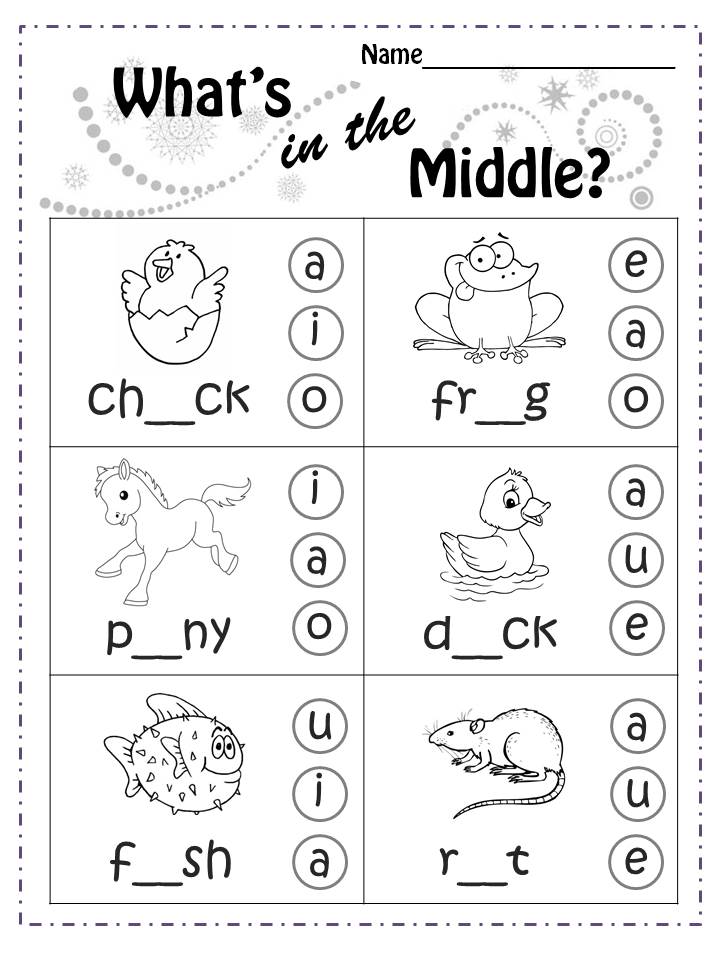 Then the child must come up with words that begin with each vowel sound. Invite him to name a word that starts with Y. After unsuccessful attempts to do this, explain that in Russian this letter never occurs at the beginning of a word. Name the words in which Y is in the middle (fish, lynx, skis) or at the end (teeth, mushrooms, mountains).
Then the child must come up with words that begin with each vowel sound. Invite him to name a word that starts with Y. After unsuccessful attempts to do this, explain that in Russian this letter never occurs at the beginning of a word. Name the words in which Y is in the middle (fish, lynx, skis) or at the end (teeth, mushrooms, mountains). - Find pictures of objects with three letters in the name , one of which is the vowel (cat, onion, cheese, crayfish, beetle, etc.). Ask the child to name the object shown in the picture, determine what vowel sound is in this word and where it is located (at the beginning, middle or end of the word).
- Take a pencil and write any vowel in the air. The kid must guess what exactly you wrote.
Magnetic letters will be a good help in learning. They are bright, multi-colored, they can be attached to any metal surfaces. The kid will be happy to play with them.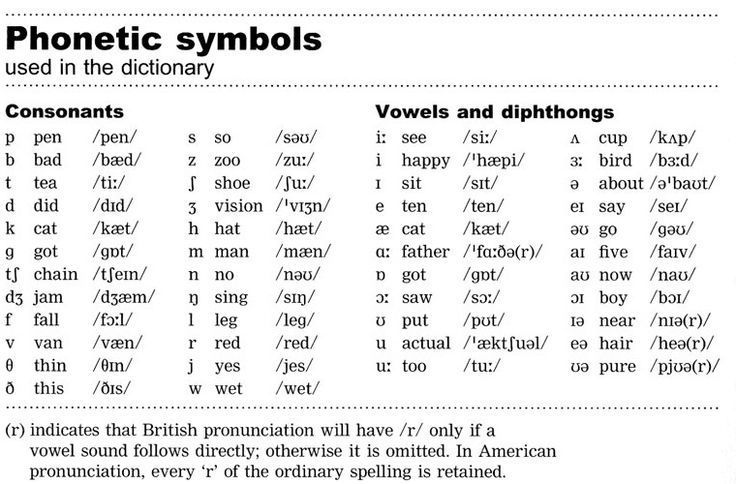

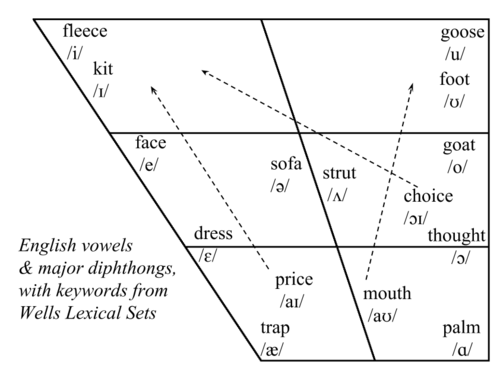 In these two patterns, the first vowel (e) does not say its name, as expected. These patterns are placed in the long ū columns because they are pronounced like the long ū sounds.
In these two patterns, the first vowel (e) does not say its name, as expected. These patterns are placed in the long ū columns because they are pronounced like the long ū sounds.  The letter e is added so that the g will represent its /j/ sound. The letter e at the end of this pattern is not pronounced.
The letter e is added so that the g will represent its /j/ sound. The letter e at the end of this pattern is not pronounced.
